



















Posted in Uncategorized










Posted in Uncategorized
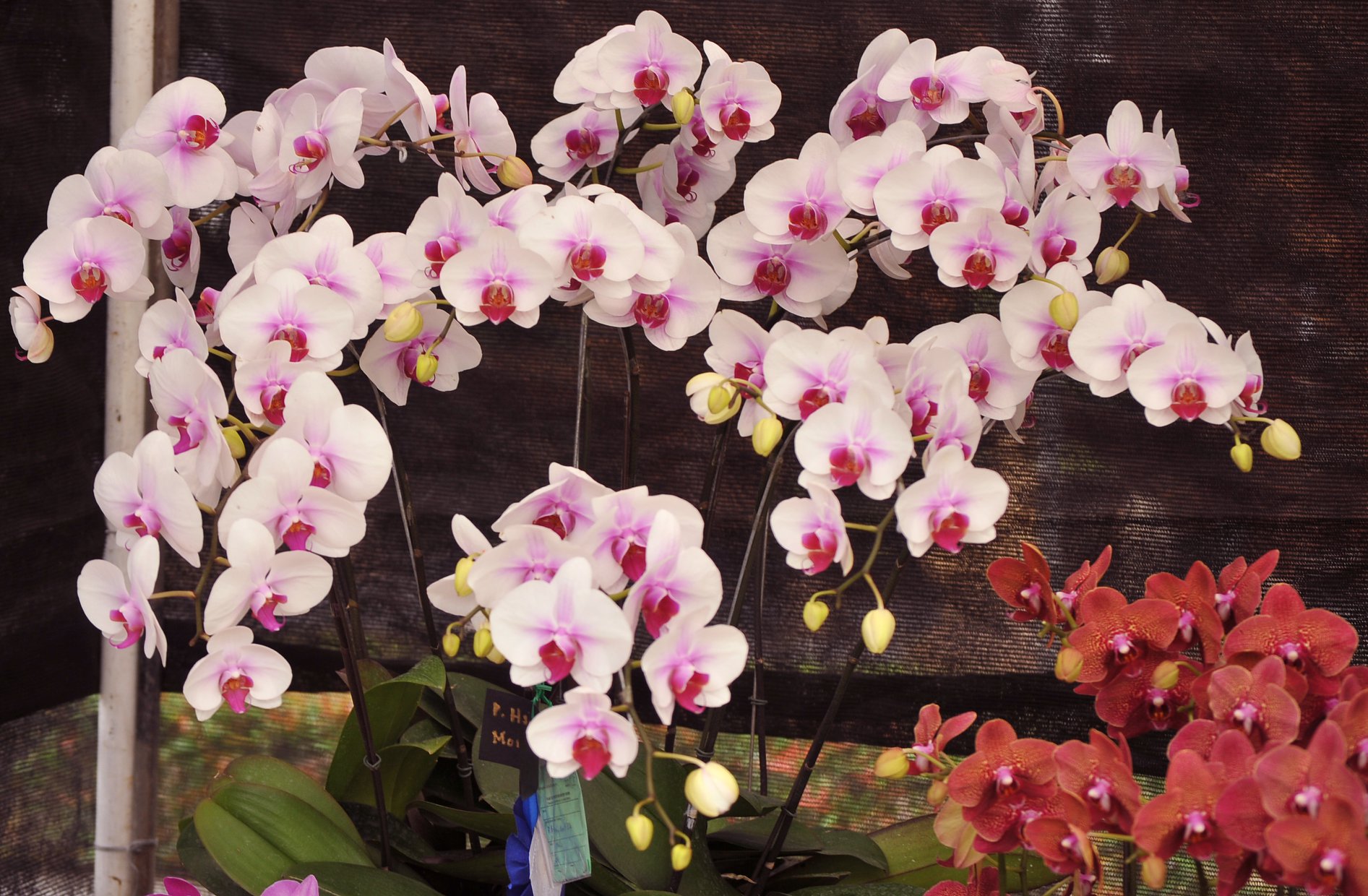
Successful orchid growing and production would never be possible without these agricultural inputs. They provide your plants with the much needed nourishment, protection from pests and diseases, thereby increasing rate of growth, providing beautiful, multiple and perfect flowers, and making your orchids healthy and resistant to diseases.
Proper timing, dilution and application of these chemicals is a must to know in order to successfully grow orchids and plants. Here are some of them…
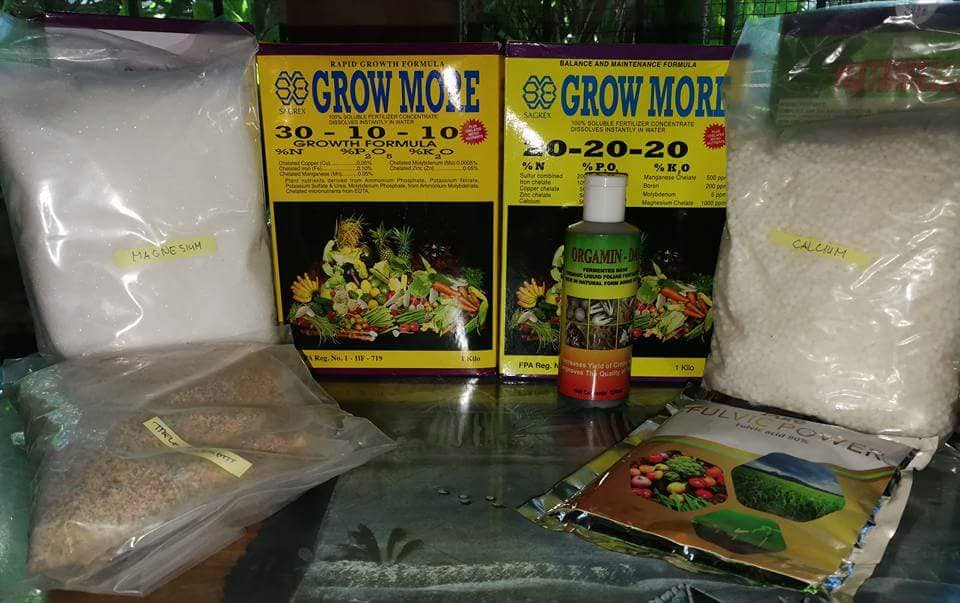
Fertilizers, pesticides, and fungicides comes in an array of brand names, however some of them are generic also. As a gardener, you have to be familiar with them.
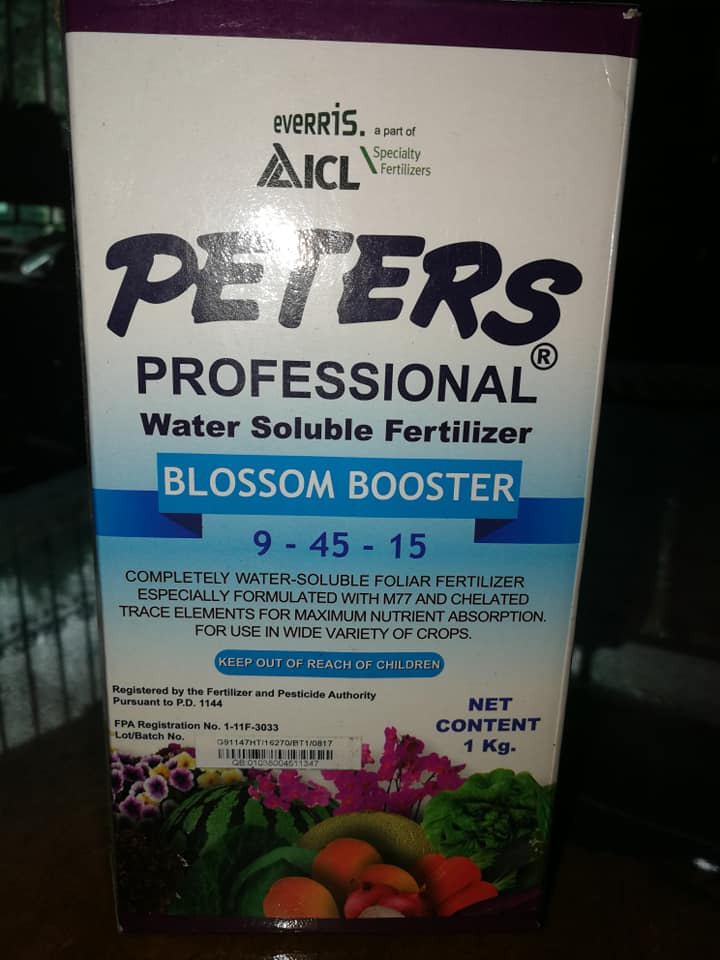
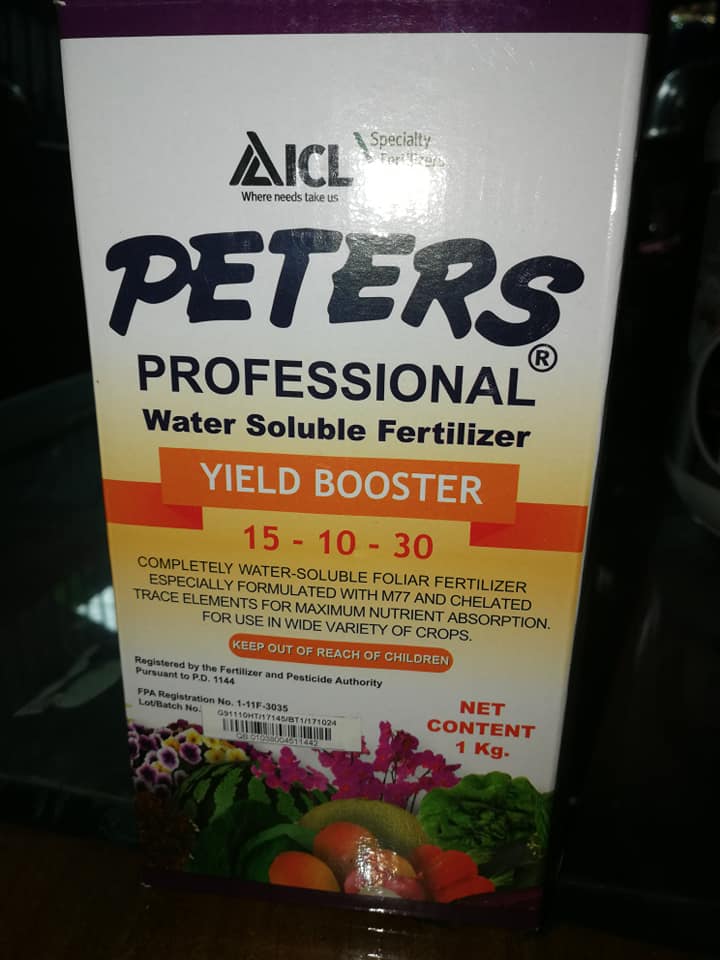
The blue Peter’s Bloom booster is used to induce flowering only to mature orchids, however, it should not be used regularly as it causes boron deficiency in orchids. The orange Yield Booster is used to production of fruits (maybe for seed pods) and can be used for your fruiting vegetables. Soluble fertilizers needs to be diluted in water and sprayed into the whole plant — leaves, stem and roots. Their entry point is mostly through the leaves, stems and roots. Spray them all during the day with the presence of sunlight… as they will not be absorbed if its dark. Peters Professional fertilizers is one of the most popular orchid and plant fertilizers used in the Philippines.
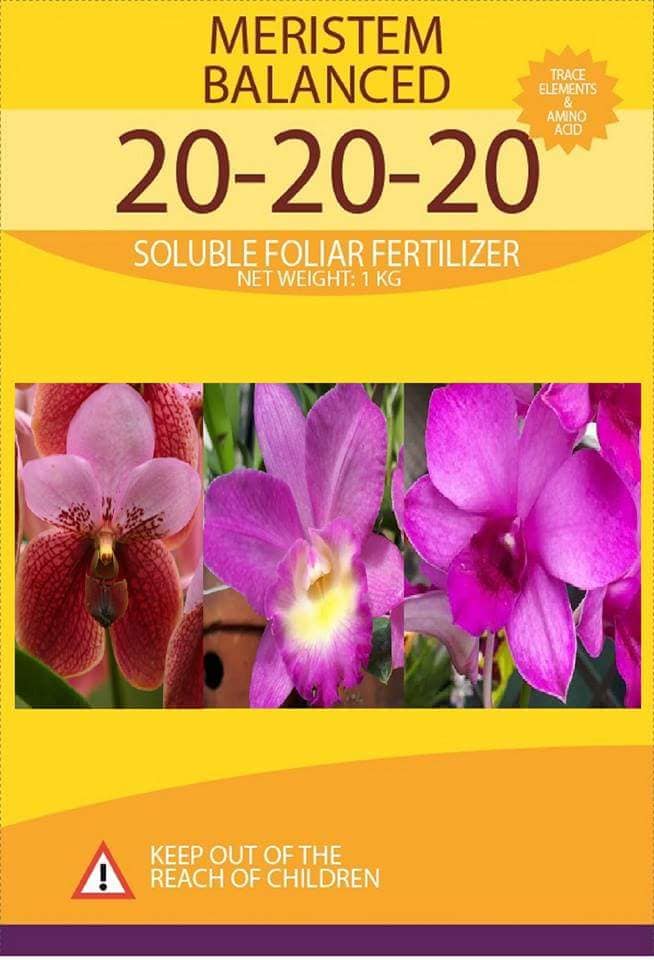
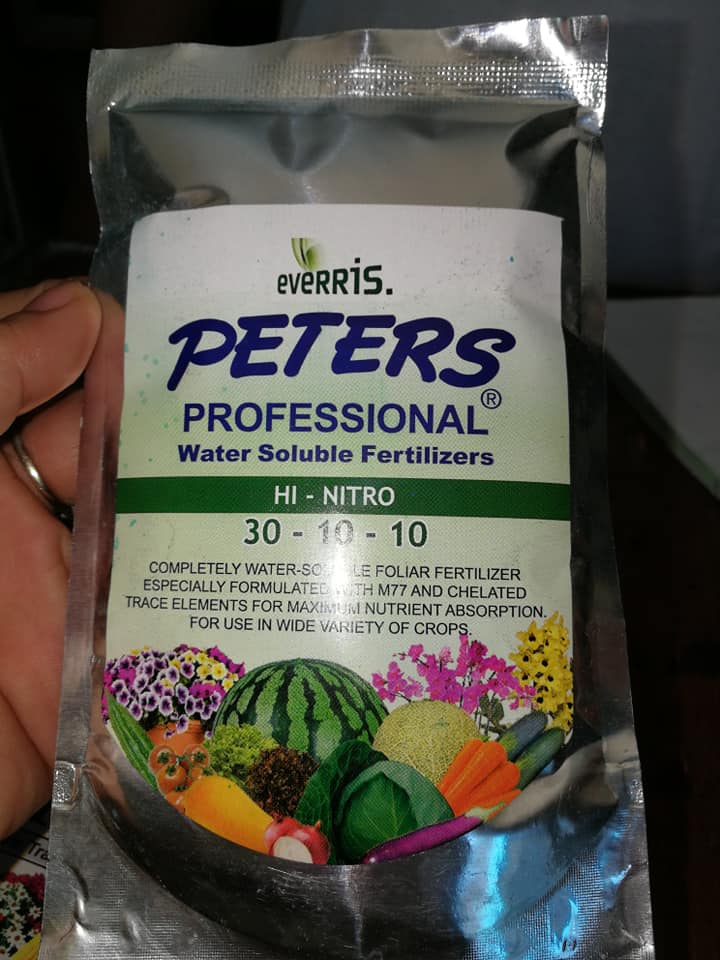
Meristem Balance Fertilizer is a common maintenance fertilizer. Peter’s Green Hi-Nitro is the ideal all-purpose maintenance fertilizer for orchids… both seedlings, and mature plants alike, and does not give much problems. Aside from the NPK Fertilizers, provide your plants also with micronutrients and trace elements.
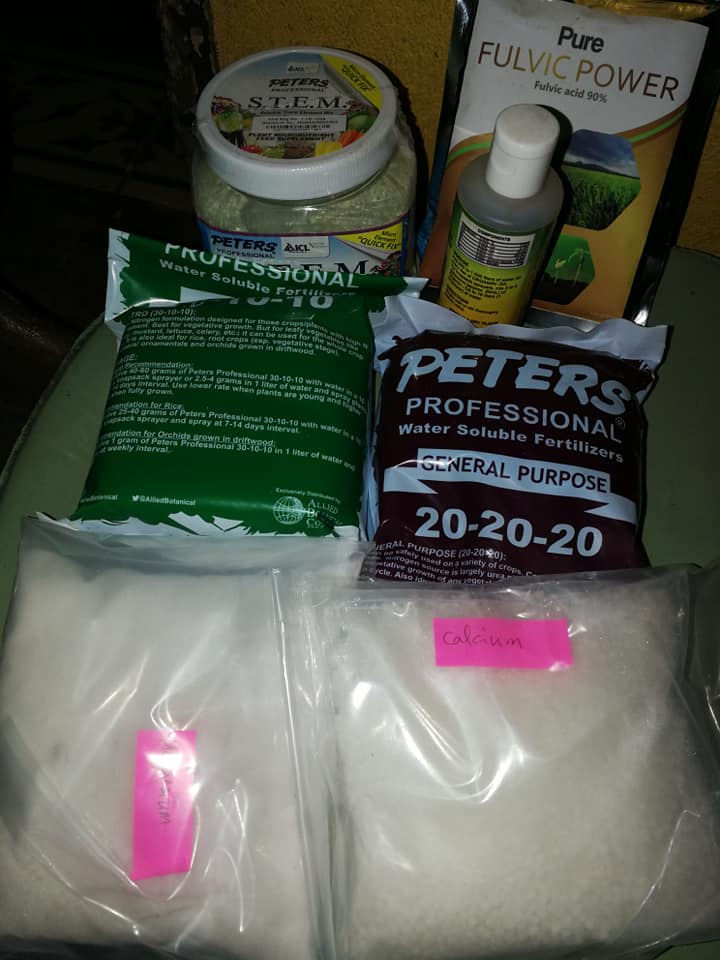
Micronutrients and trace elements like these provide the much needed nutrients in minute amounts… usually lacking when regularly spraying the NPK Fertilizers.
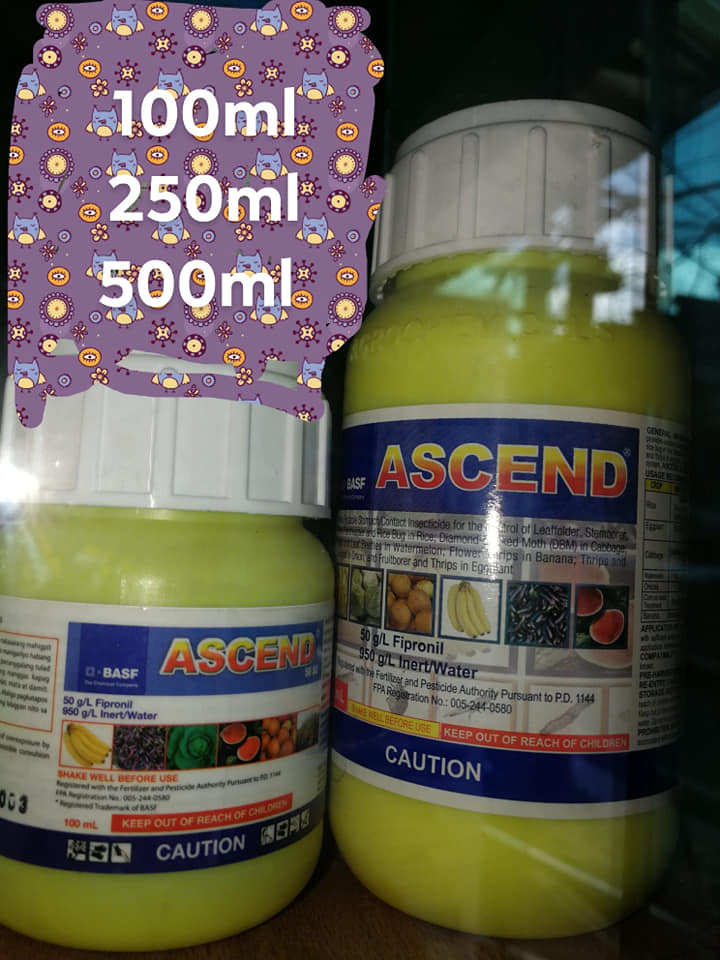
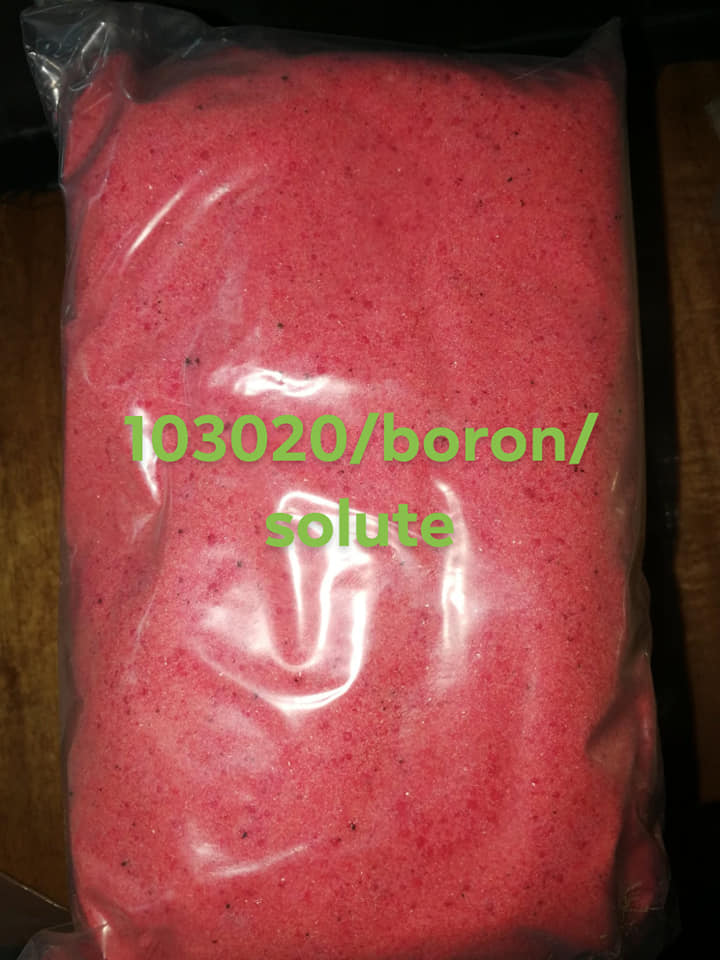
Ascend is a miticide used to control the minute sucking spider mites, another brand is Omite. Boron (Boric acid) is used to provide Boron for orchids with boron deficiency.. due to spraying too much blooming fertilizers. Boron deficiency is seen in Dendrobium orchids wherein their top leaves does not open and flowers fail to come out or open. Boron is also applied to mature papaya plants.

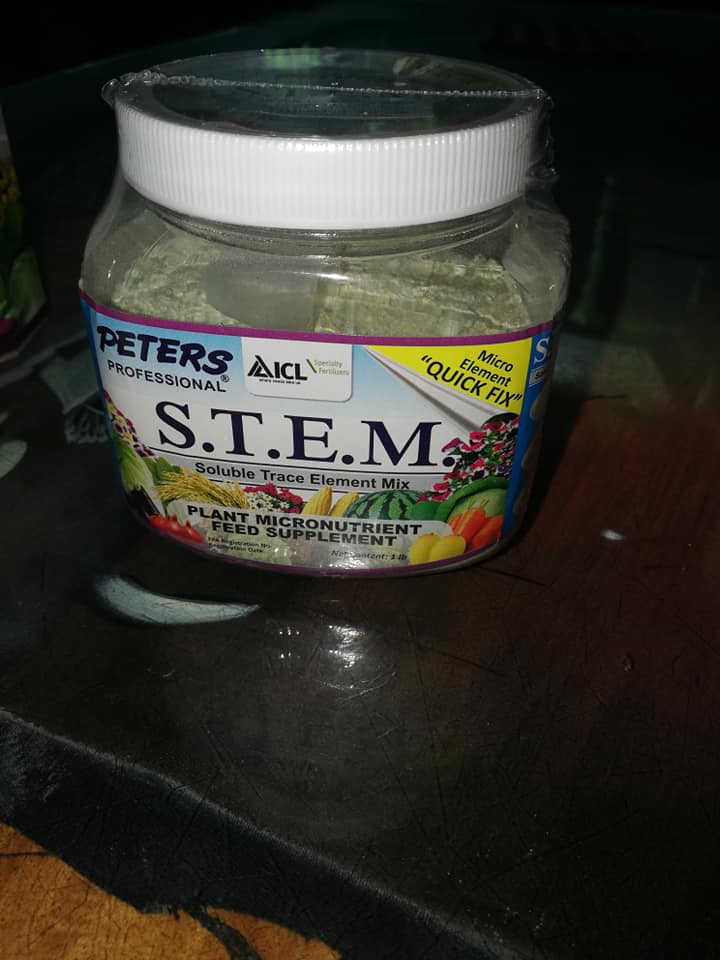
The violet Peter’s General Purpose is a complete fertilizers both for orchids and ornamental plants. STEM or Soluble Trace Elements Mix is a fertilizer with micronutrients (Magnesium, Calcium, Iron, Manganese, Boron, Copper, Cobalt, Sulfur etc. ) sprayed separately. However, there should be a seperate spraying of Calcium nitrate and Magnesium sulfate as these two fertilizers precipitate in the presence of other fertilizers… due makes them useless.
Plastic hand sprayers… ideal for hobbyists. But if you have hundred or thousands of orchid plants, better use a plantic (heavy) knapsack sprayer or a compressor with a drum-full of chemicals.
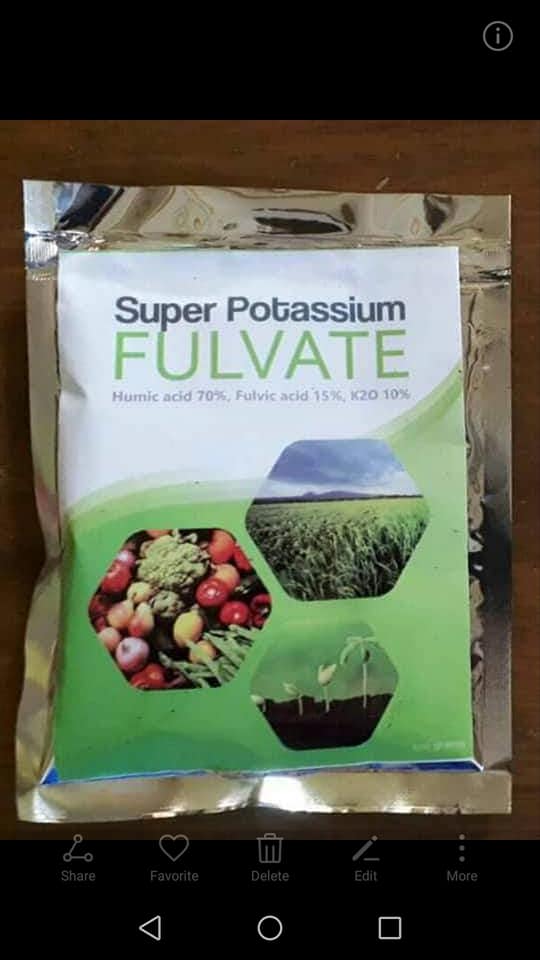
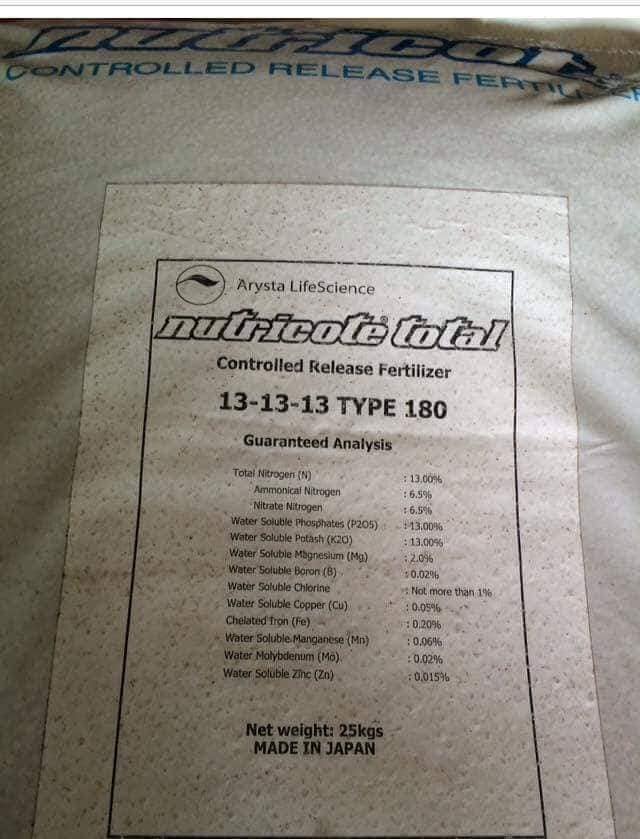
Fulvic Acid (Fulvate) with Potassium is a biostimulant dissolved in water and sprayed to orchids. It increases absorption rate of fertilizers by plants through the leaves.
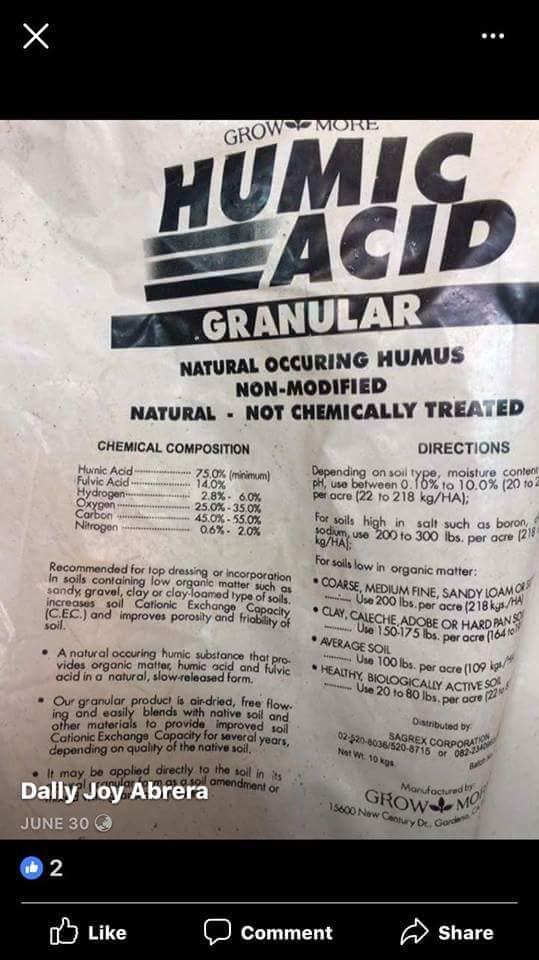
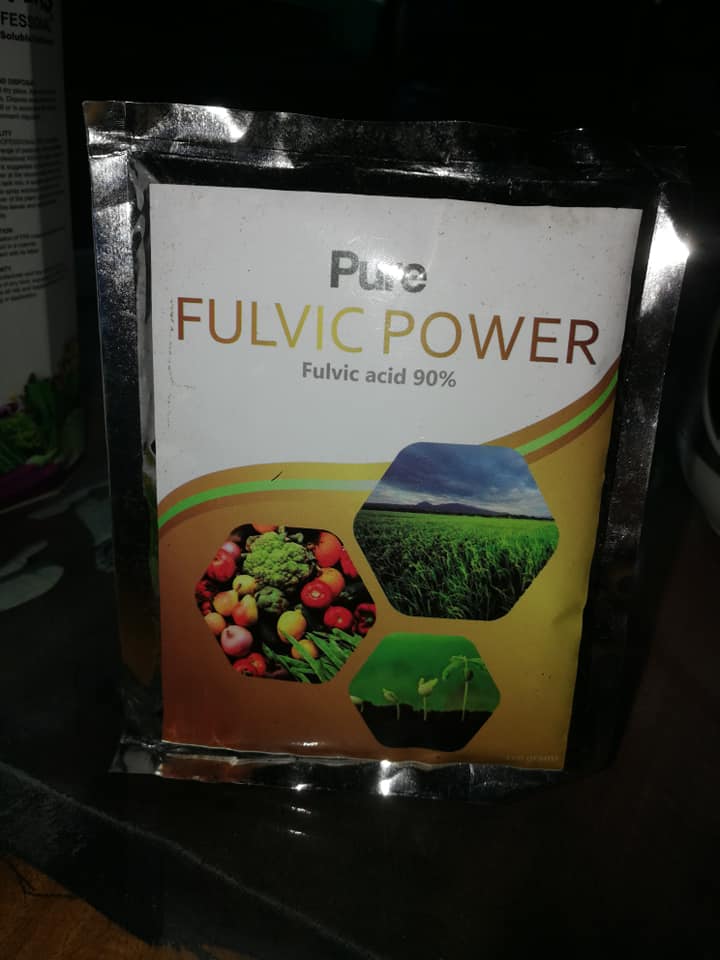
Humic acid is also a biostimulant, but usually applied on the soil for terrestrial orchids and ornamental plants in order to release nutrients held captive by soil particles and increase absorption of nutrients by the plant roots. Humic acid is preferrable used in organic farming, especially vegetables. Fulvic Acid is a complement of Humic acid, usually used as a foliar spray to increase nutrient absorption.
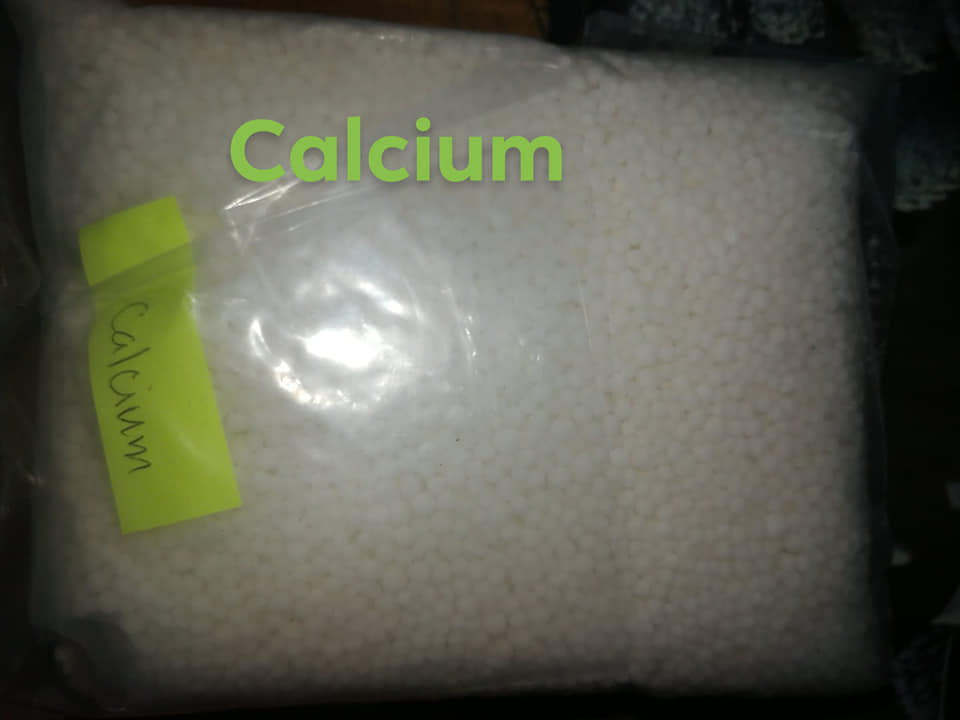
Calcium nitrate is a micronutrient fertilizer to provide calcium, which strengthen cell walls and plant tissues in presence of light, and prevent rotting during rainy season. It is applied at 1 tsp per litter or lower, once a month and sprayed as is… and should not be mixed with other fertilizer as it precipitates . It goes true with magnesium sulfate… which induces more chlorophyll production.
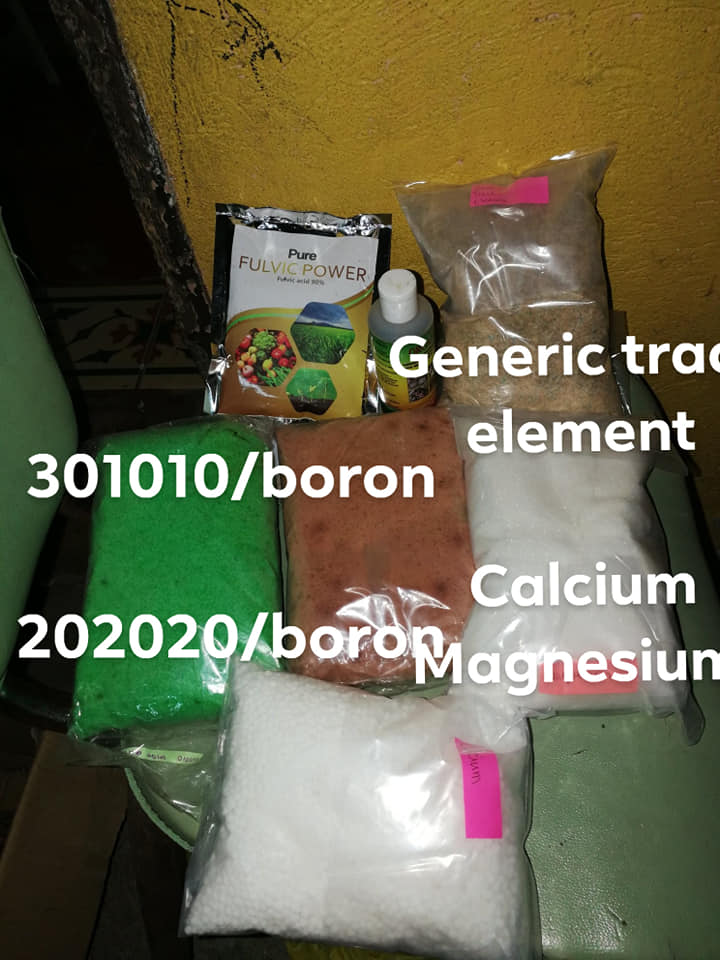
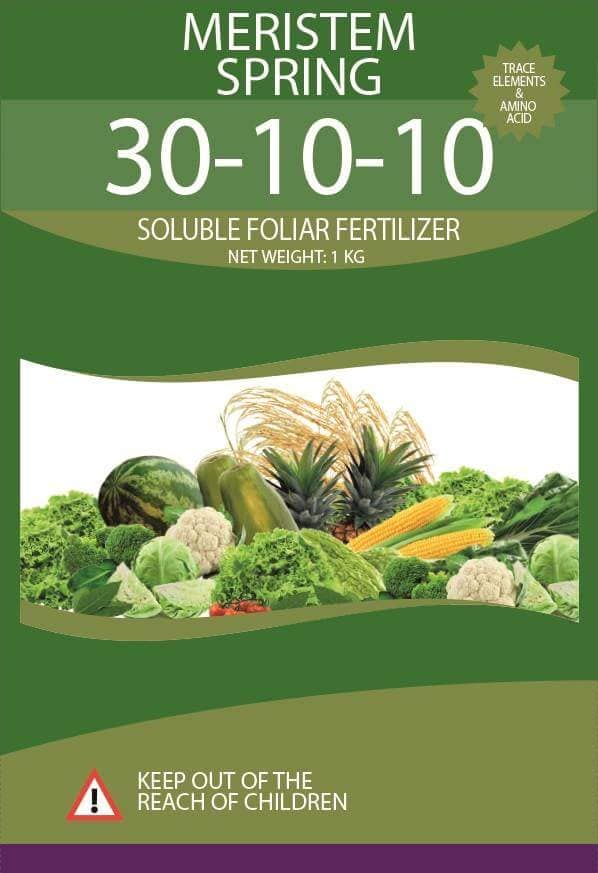
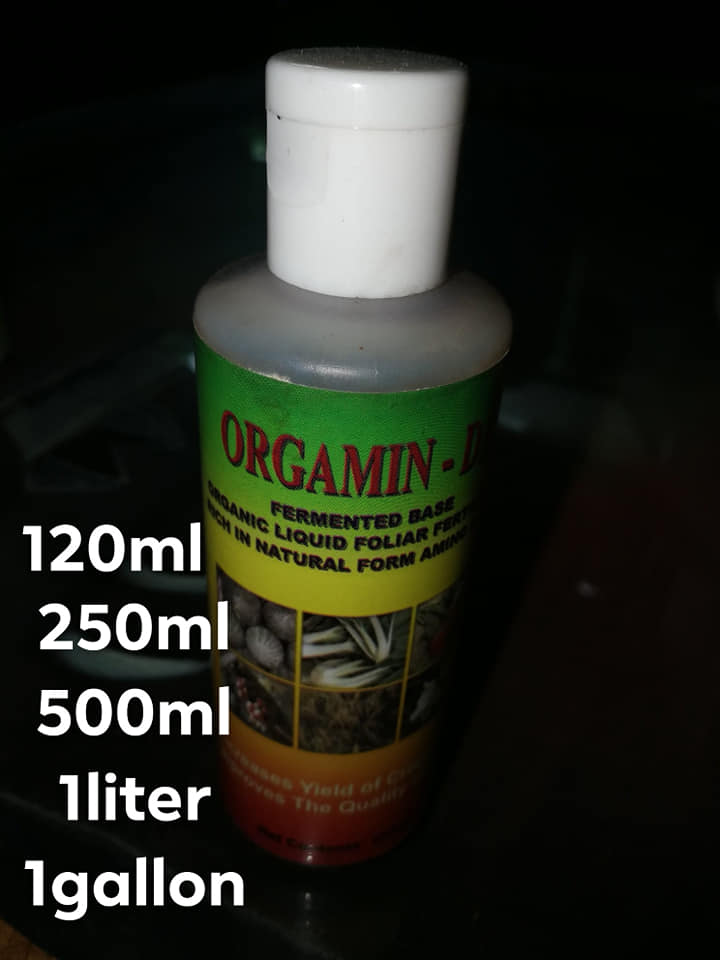
Meristem Spring is a high nitrogen fertilizer used for orchid seedlings, also for leafy vegetables. Orgamin is an organic fertilizer with amino acids, for inducing protein production in plants… ideal for flowering and fruiting… and for stressed plants.
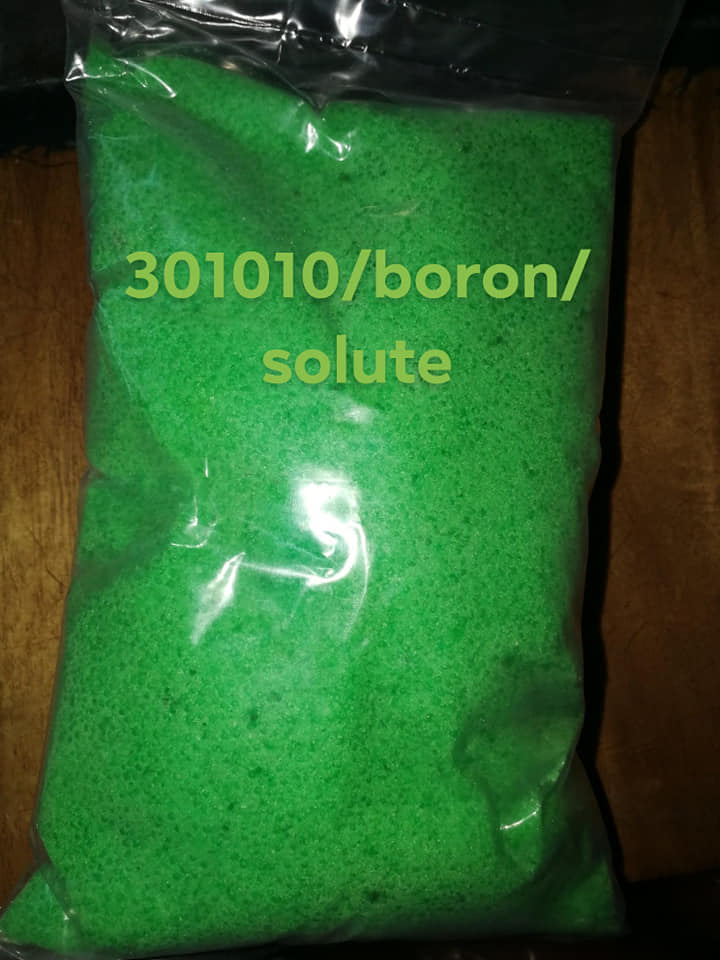
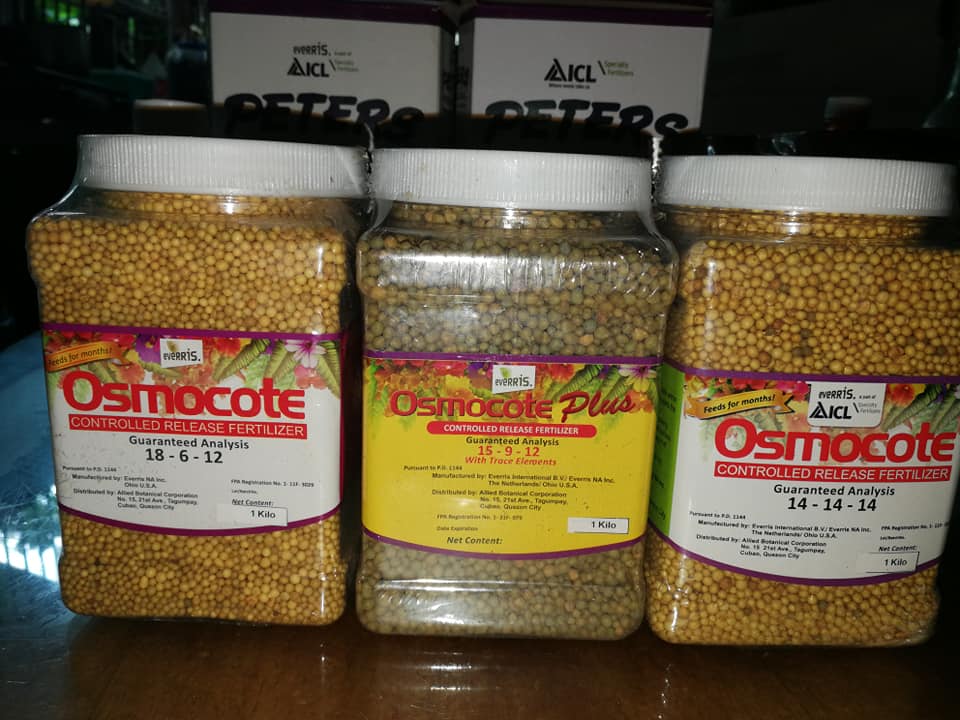
Boron for your Boron Deficiency cure… (same as the red powder form above) sprayed once a month at about 0.5 grams / liter of water.
TIP: As much as possible, its better to spray fertilizers in diluted form instead of exttra strength to prevent burning of leaves. Spray once a week for ordinary fertilizers… and if you intend to spray daily, dilute it 5 time more with water. Thoroughly spray water on your plants to remove excess fertilizers. It is recommended to place ornamental plants (ferns, philodendrons, aglaonema) below your orchids in order for them to enjoy and get the excess fertilizers that will be dripping or leaching out of their pots. Wear protective clothing when spraying chemicals and please read labels properly before using them on your plants.
For orders look for Dally Joy Abrera (Orchids Bloomer) +63 9778355370
Powered by: Home Gardening PH
o
Posted in Uncategorized

Biostimulants may further help farmers increase yield and produce quality vegetables.
There are 3 new agricultural biostimulant products offered by HARBEST AGRIBUSINESS CORPORATION for the further improvement of growth performance and disease resistance in plant crops. They improve the availability of nutrients in the soil and increases efficiency in nutrient absorption coming from applied fertilizers. Biostimulants are already being used by first world nations in increasing agricultural crop yields.
You might ask, what are bio-stimulants? Agricultural biostimulants a include diverse formulations of compounds, substances and micro-organisms that are applied to plants or soils to improve crop vigor, yields, quality and tolerance to abiotic stresses an diseases.
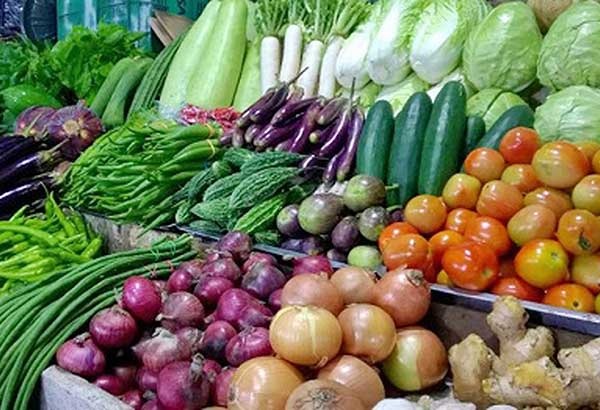
Biostimulants foster plant growth and development throughout the crop life cycle from seed germination to plant maturity in a number of demonstrated ways, including but not limited to:
What distinguishes biostimulants from traditional crop inputs?
Biostimulants operate through different mechanisms compared to fertilizers, regardless of the presence of nutrients in the products. Biostimulants differ from crop protection products because they act only on the plant’s vigor and do not have any direct actions against pests or disease. Crop biostimulation is thus complementary to crop nutrition and crop protection.
Some of the Agricultural Biostimulants used today are:
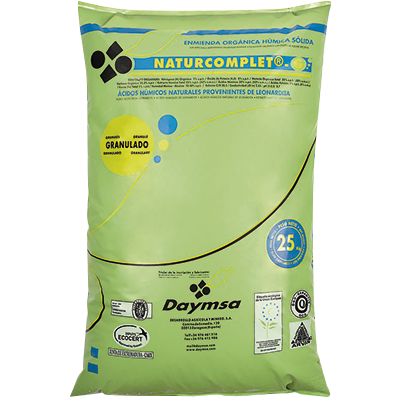
HUMIC ACIDS FROM LEONARDITE – Naturcomplet-G
Naturcomplet-G is activated humic acids from Leonardite (a mineraloid that contain a rich source of humic acid). It comes in a granulated form and is compatible with mineral fertilizer applications. Humic acid improves effectiveness of mineral fertilizers, whereby increasing availability of mineral content in the soil for easy absorption, It also improves root growth and increases yield. Naturcomplet-G contains total humic extract at 50% organic dry matter that improves soil characteristics and provides optimum soil condition for high production yields when used with mineral fertilizers. It is actually ideal for organic farmers which uses organic leaf composts and decomposed animal manure as fertilizers. Humic acid attaches itself to minerals cations like calcium, magnesium, etc and carry them into the root system.. Its main function is as a carrier / magnet for minerals bound in rocks or soil, and make it readily available to the plant when dissolved in water.
It is usually applied at 250 – 500 grams / tree per year (e.g. banana) or 500-1000 grams per large trees (e.g. Mango), For small crops like Papaya and creeping vegetable vines, about 50-60 grams / plant is applied. For wide scale farming, like leafy vegetables, rice and corn, about 100 kg /hectare is applied. It is also recommended to reduce the fertilization application into half when using this product. It can also be applied to ornamentals like foliage plants, flowering plants, vegetables, and fruit tree seedlings.
A more comprehensive detail on Naturcomplet-G and a downloadable brochure is available here
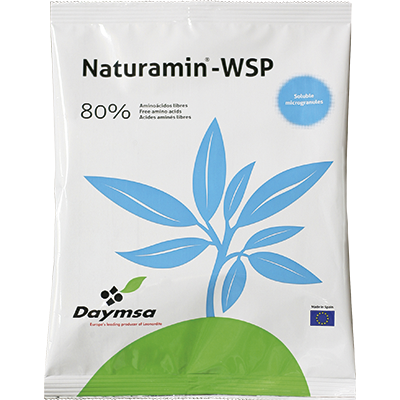
Free Amino Acids – Naturamin – WSP
Naturamin WSP is product containing 80% 17 essential Free Amino Acids. Amino acids are the building blocks of proteins which is needed in enzyme formation, biosynthesis of proteins which is needed for growth, development, photosynthesis, flowering, fruiting and fruit maturation and ripening.. By providing the plants with these readily available amino acids, especially during time of stress, it greatly enhances plant growth and recovery from stress. Amino acids are usually needed and biosynthesized by the plant in their body repair, rehabilitation and recovery, and if applied, it removes the double work time the plant needs to produce these amino acids, instead just readily absorbs them and instantly converts them into proteins., helping your plants to grow faster, recover in less time and produce earlier and more healthy fruits and flowers.
It is usually applied as a foliar spray at about 6-15 grams / 16-Liter knapsack sprayer. Applied during flowering and fruit setting. This can be applied to fruiting vegetables, fruit trees (mangoes, papaya, banana, melons, watermelons, rice, sugarcane, ornamentals, and orchids.
A more comprehensive detail on Naturamin-WSP is available here.
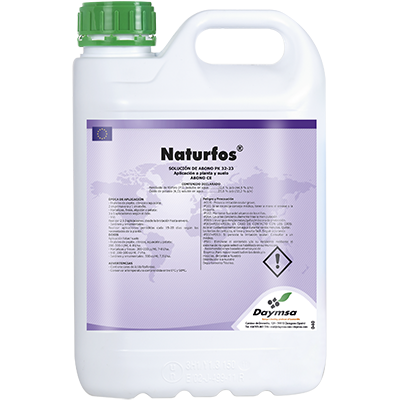
Potassium Phosphite – Naturfos
Naturfos is a plant nutrition product rich in phosphorus and potassium, which are two of the three important macroelements in plant nutrition. It promotes flowering and fruiting , improving fruit quality (sweetness), fruit formation and ripening. It also improves plant defenses against fungi … thus function as a fungicide by increasing the plants resistance to fungal diseases, by producing compounds like phytoalexins which are toxic to pathogens.
This is applied as a foliar fertilizer at a rate of 30 ml / 16 liter water in a knapsack sprayer or 2-3 ml / liter water. Before flowering and once upon fruit set. It is used for fruit trees, short term but high value vegetable and fruit crops, and ornamentals and garden plants. It may also be use as a drip fertigation application.
A more comprehensive detail on Naturfos is available here.

Humic acid is ideal in organic farming by incorporating it to compost fertilizers
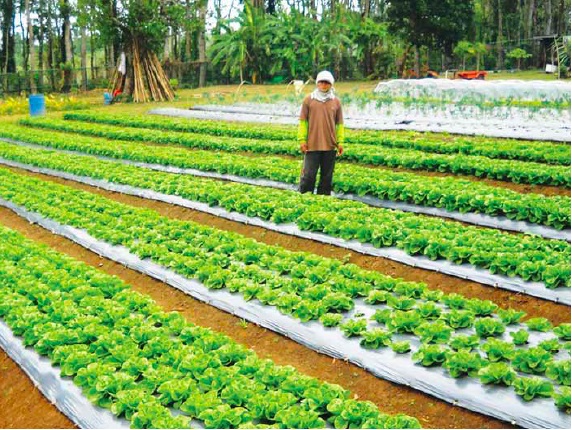
Humic acid can be applied in low amounts with mineral fertilizers in soil under the plant hills.

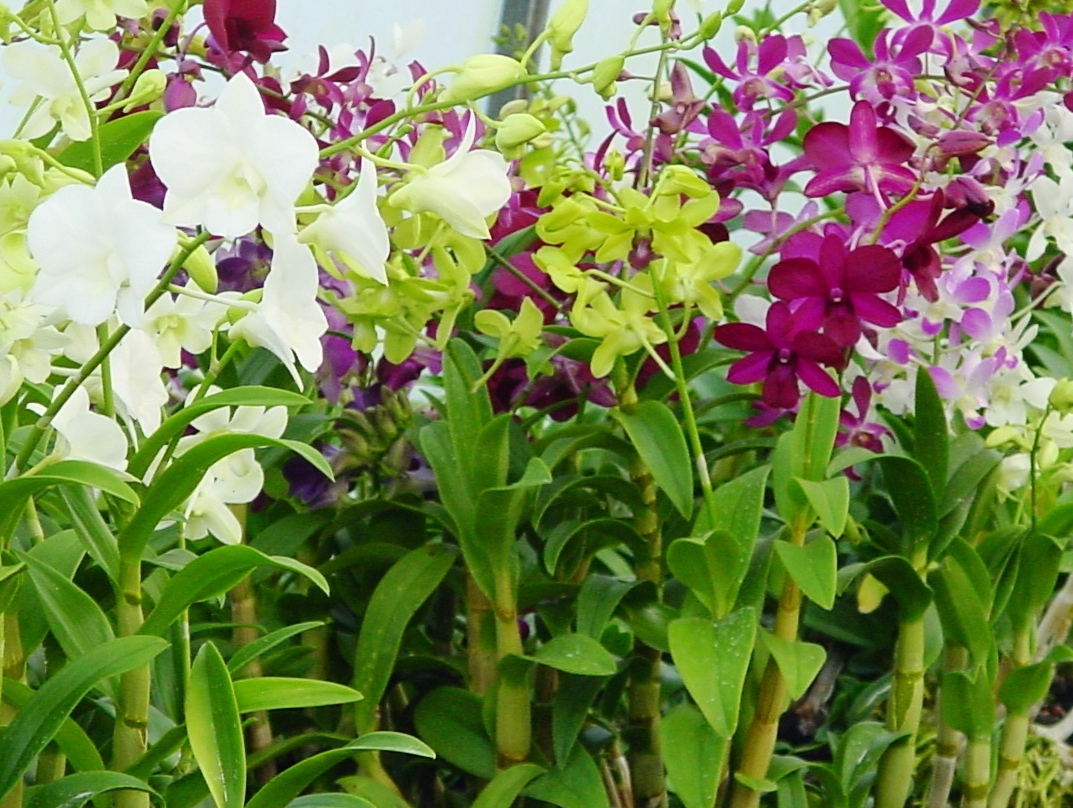
Amino acids and potassium phosphite may be used for orchids to increase flowering and provide more colorful and well developed flowers.

Amino acids and potassium phosphite may be used for papayas to increase fruiting and provide more healthy and well developed fruits.

Humic acids, amino acids and potassium phosphite may be used for mangoes to increase fruiting and provide more quality and well developed fruits.
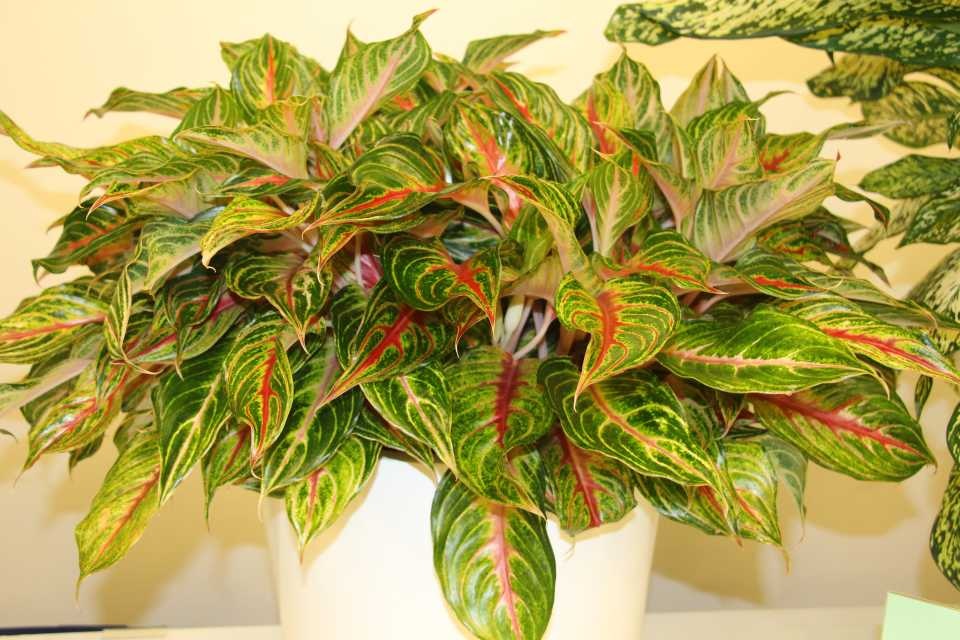
Humic acids, amino acids and potassium phosphite may be used for ornamentals like aglaonema and philodendrons bring out the bright colors in leaf color and well formed healthy leaves.
Links:
Harbest Agribusiness Corporation


Powered by: Home Gardening PH

Posted in Uncategorized
The 72nd Annual Orchid Show is the flowering season of the Phalaenopsis, Dendrobium anosmum, Grammatophyllum, and Cattleyas. Other vandaceous and exotic orchid genera are also in bloom as of this season. It is the time that orchid enthusiasts and hobbyists are able to see this unique orchid species and hybrids in full bloom and arranged artistically in landscape exhibits. An additional feature this year is the inclusion of bonsai trees into the show.
For Filipino garden enthusiasts, orchid hobbyists and plant growers, the cool months of February and the warming months of March are signs of the seasonal and much-awaited event in the Philippine Orchid Society (POS), the Annual Orchid and Garden Show. Perennially scheduled in time during the blooming season of the fragrant Sanggumay (Dendrobium anosmum), the graceful Phalaenopsis species, the majestic and large-flowered Cattleya and the floriferous Grammatophyllum species, the event highlights the promotion and revival of the hobby and technology in orchid growing and also plant growing in general. With this, the Philippine Orchid Society, in cooperation with the Quezon City government, and Quezon Memorial Circle authorities stageed their annual orchid and garden show at the Hardin ng mga Bulaklak ( Flower Garden ) within Quezon Memorial Circle .
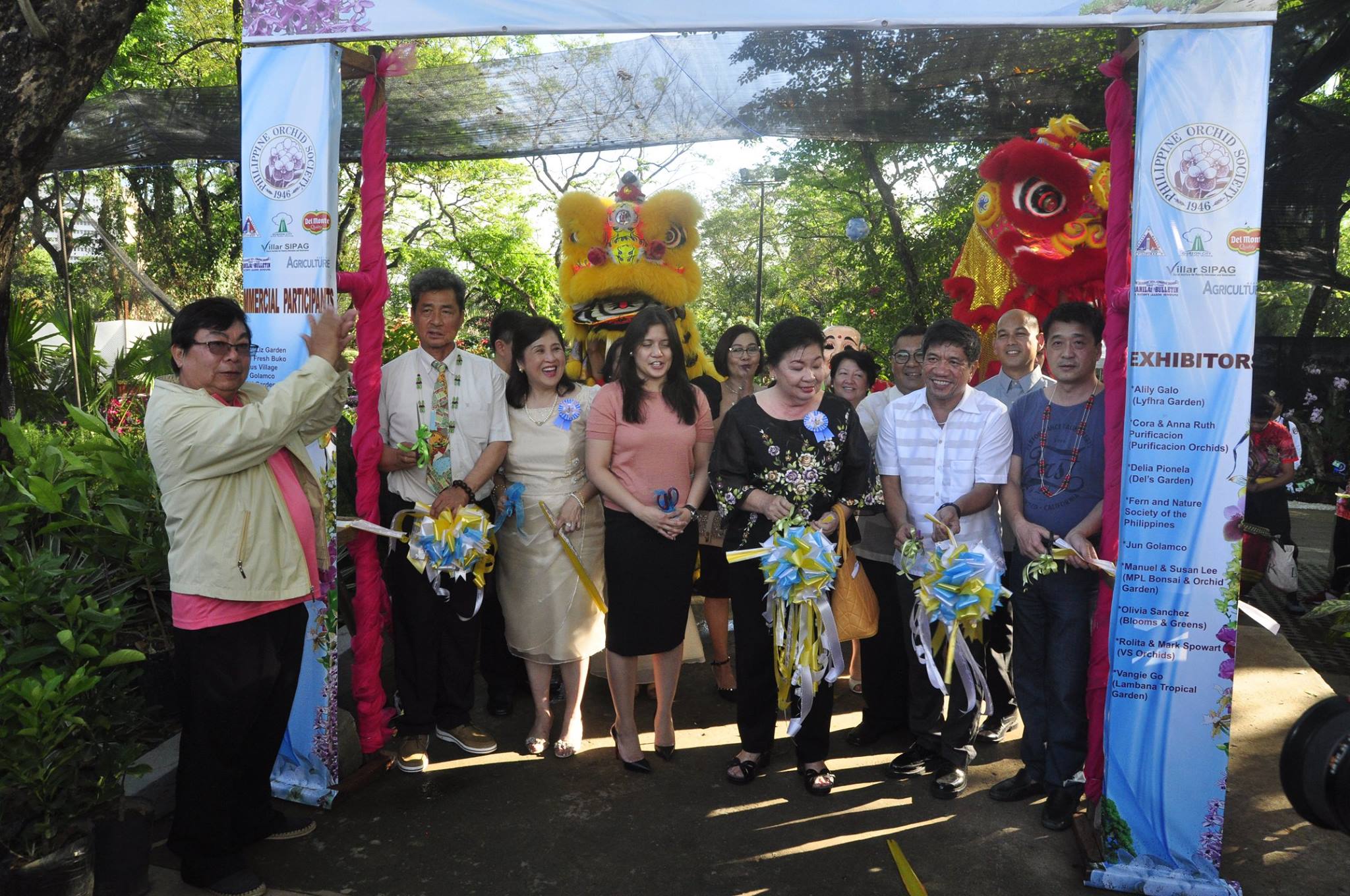
Ribbon Cutting ceremony at the entrance gate to the commercial exhibits.

The show started with a colorful lion dance. Invited guests includes the International Bonsai Masters from Republic of China, Mrs. Gloria Angara, Dr. Preciosa Soliven, Mr. Joselito ” Butch” Campos Jr., Dir. Mundita Lim, Ms. Camille Villar and members of the garden organizations. Posing here with the Lion Dancers are Mr. Kelvin Manubay, Ms. Camille Villar and Mrs. Evangeline Go.

Invited guests and officers of the Philippine Orchid Society poses for a souvenir shot
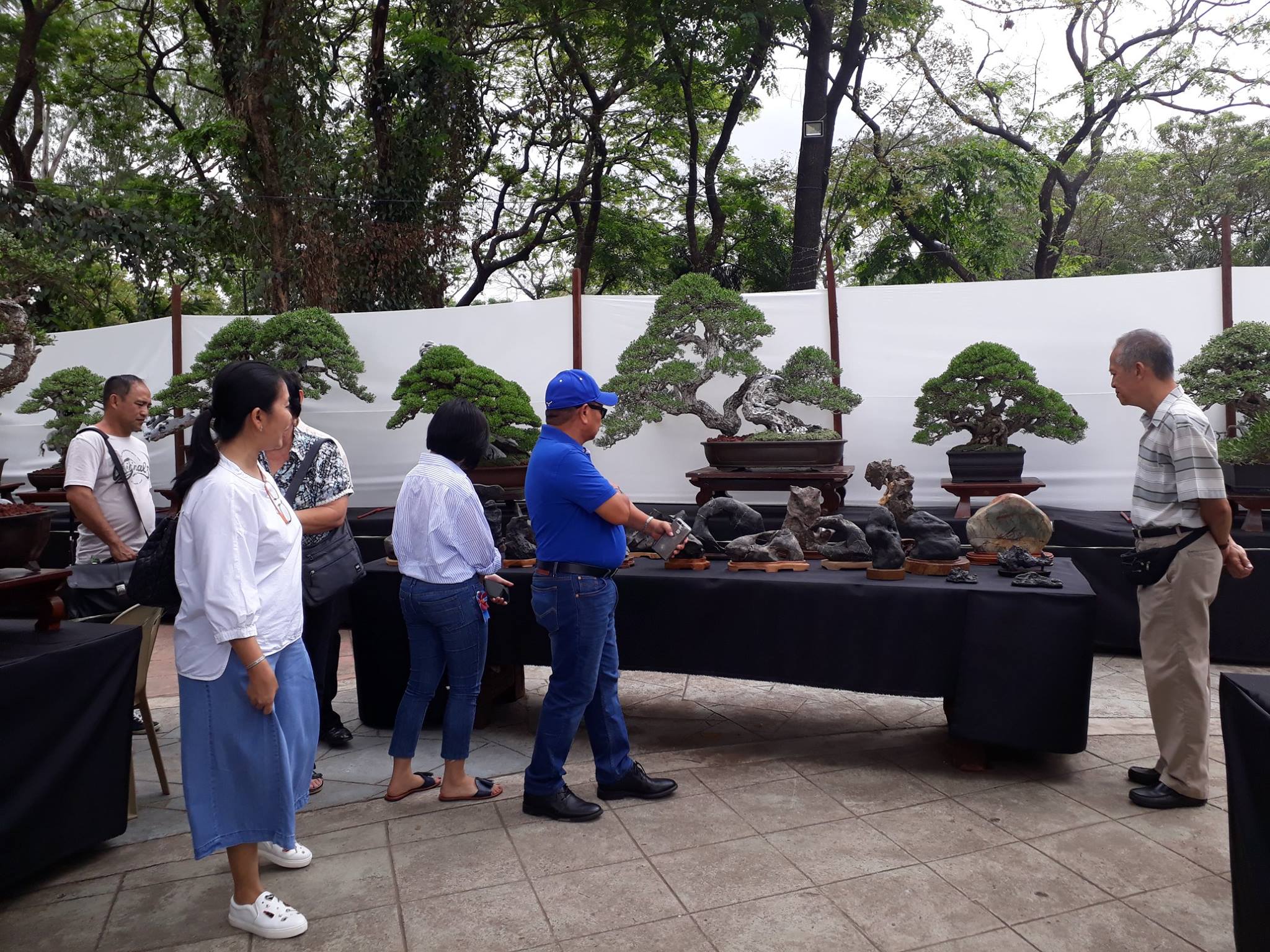
Touring the Bonsai Exhibits
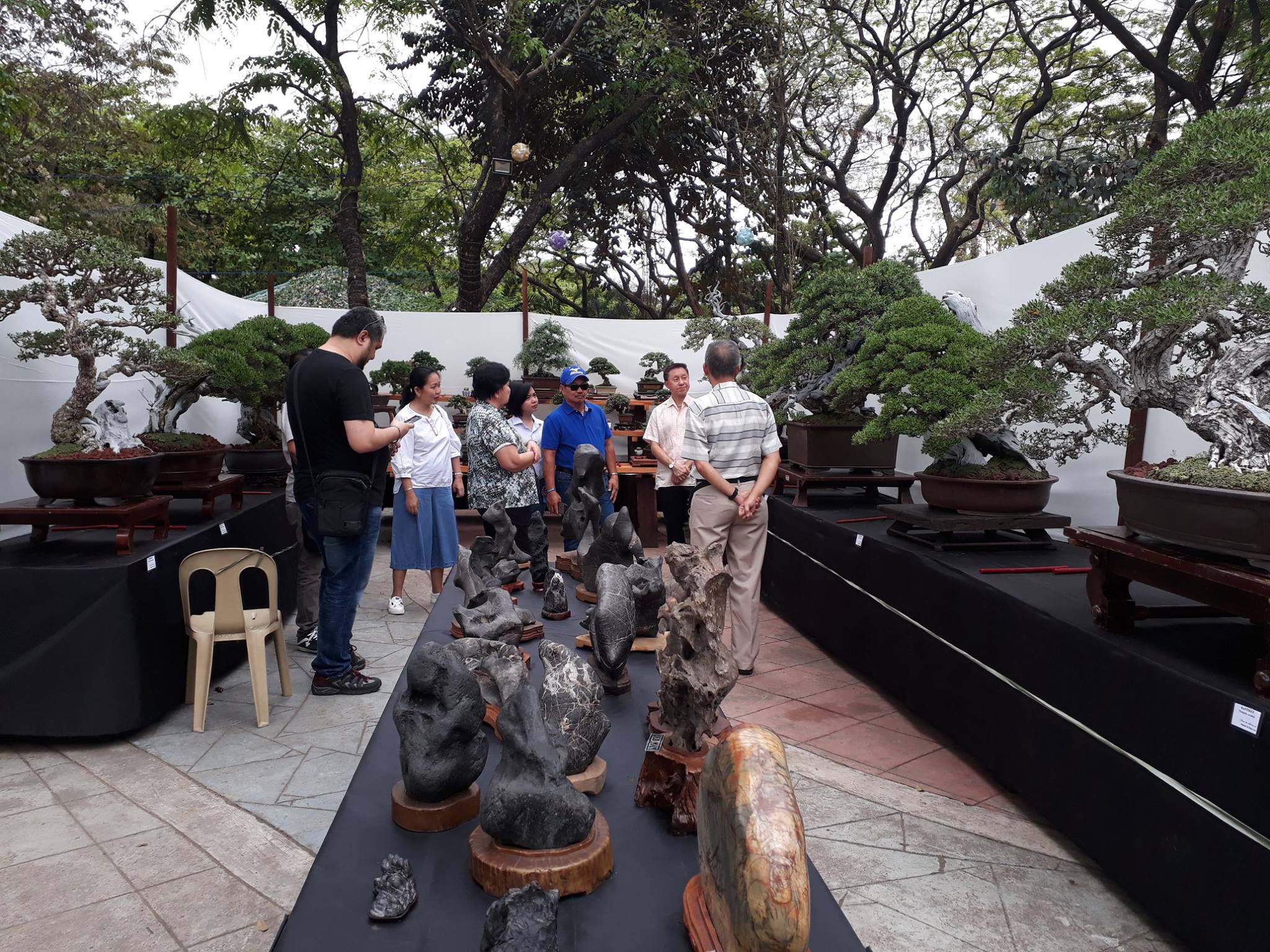
Along the Bonsai exhibits are the interesting rock exhibit with various imaginary shapes.
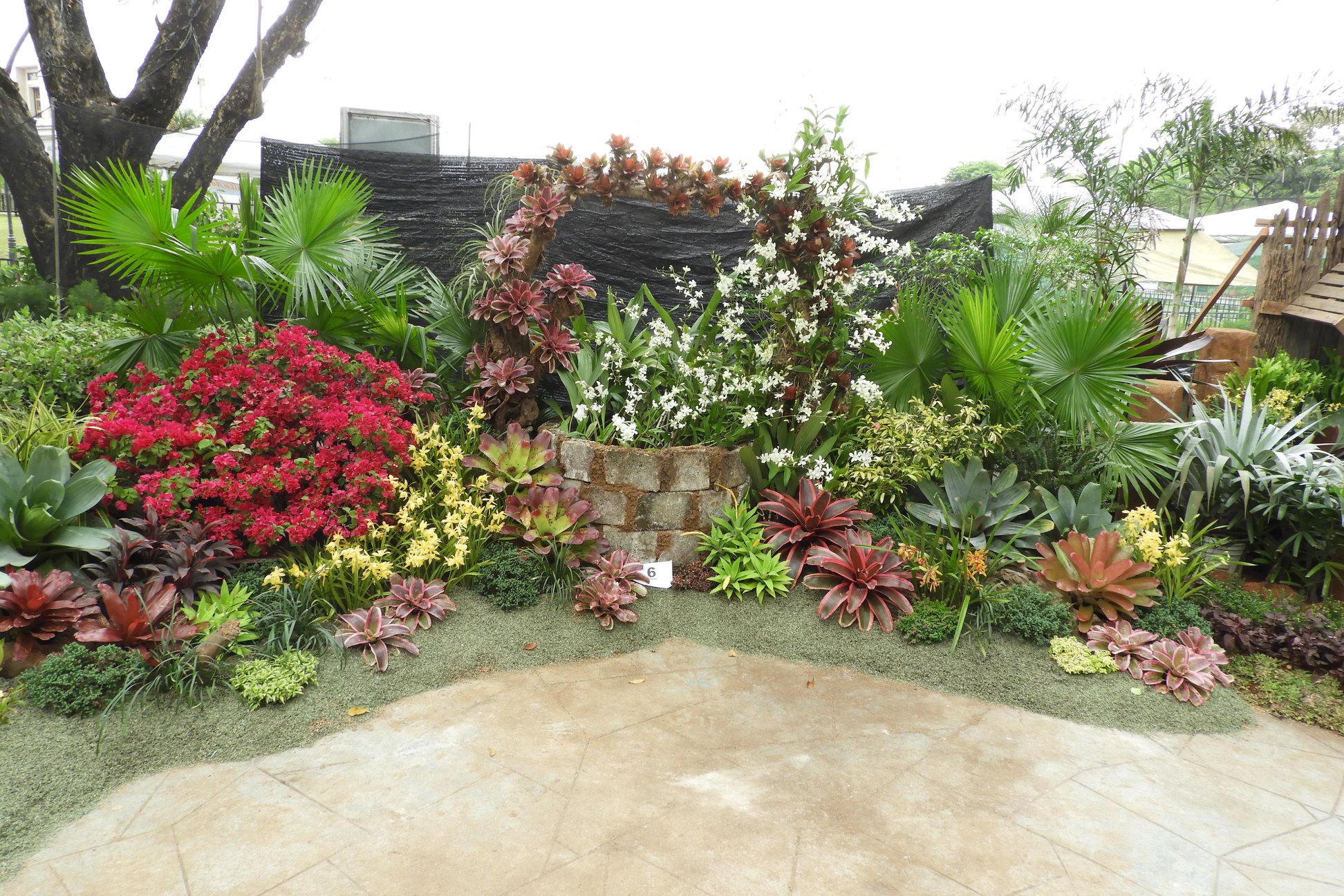
One of the landscape exhibits at the Orchid Show

A display of floriferous Phalaenopsis hybrids by Purificacion Orchids
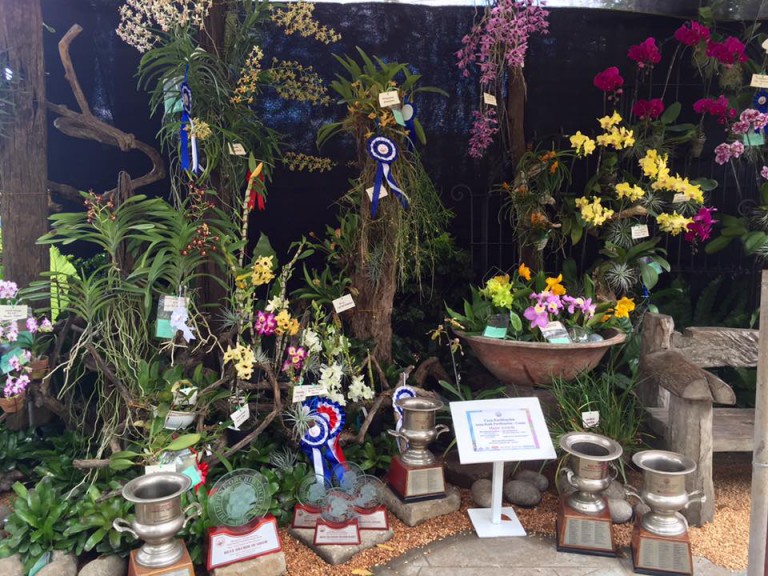
Orchid display of Purificacion Orchids (Photo by Rence Chance)

Mrs. Delia Pionela posing with her landscape exhibit. (Photo by Rence Chan)
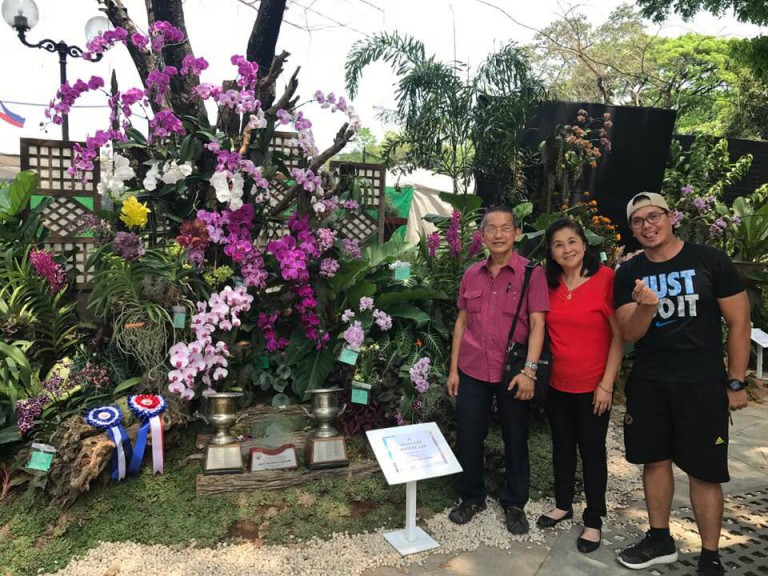
Mr. Manuel and Susan Lee; and Mr. Joseph Estrada of Palawan Bonsai Society

Part of the Orchid Show is a series of free daily lectures on various topics on growing important garden plants like orchids, bonsai, cactus and succulents. Free daily lectures begins at 2:00 in the afternoon:
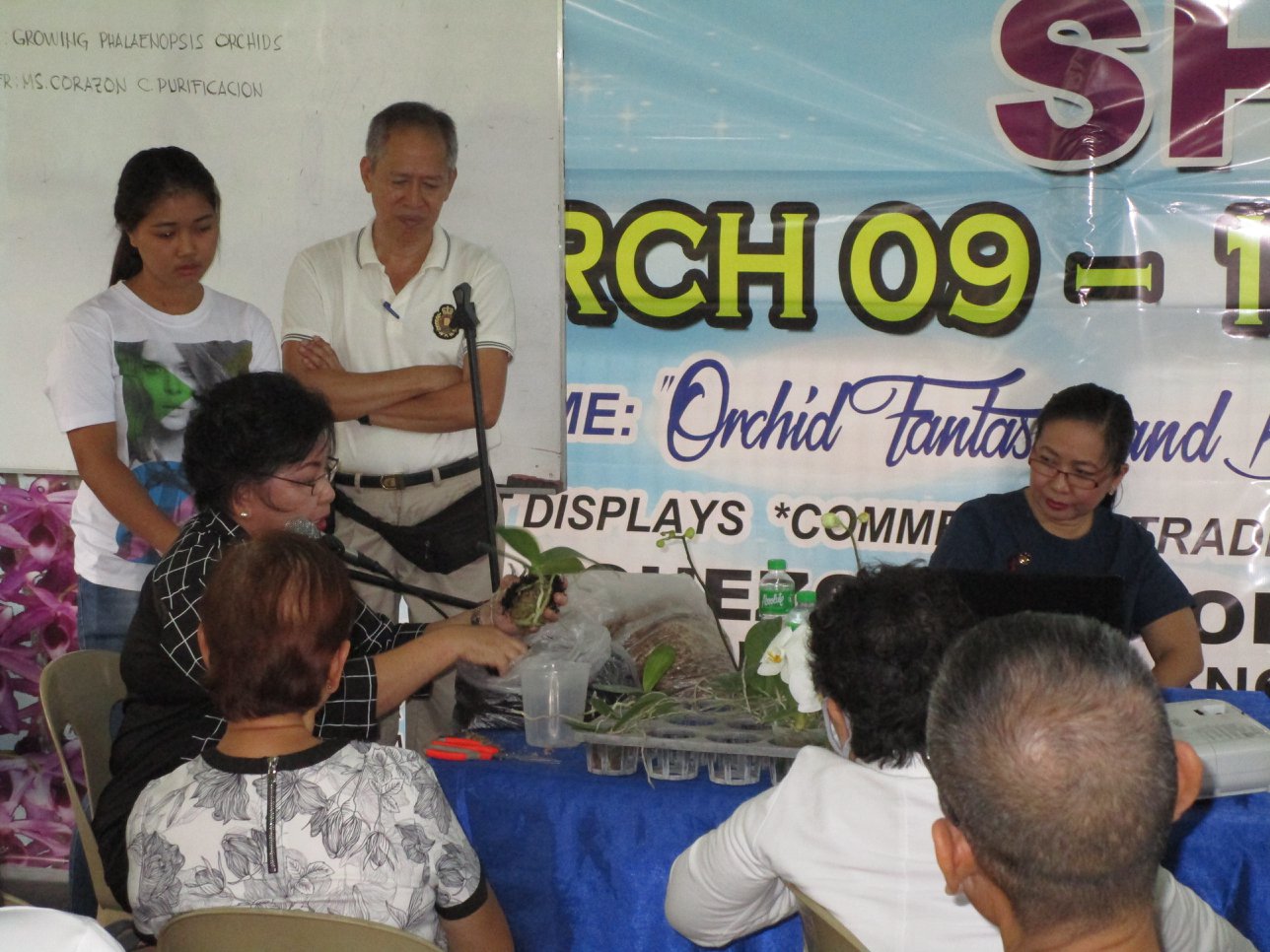
Lecture on the Growing of Phalaenopsis Orchids by Mrs. Cora Purificacion and Anna Ruth Purificacion-Conde
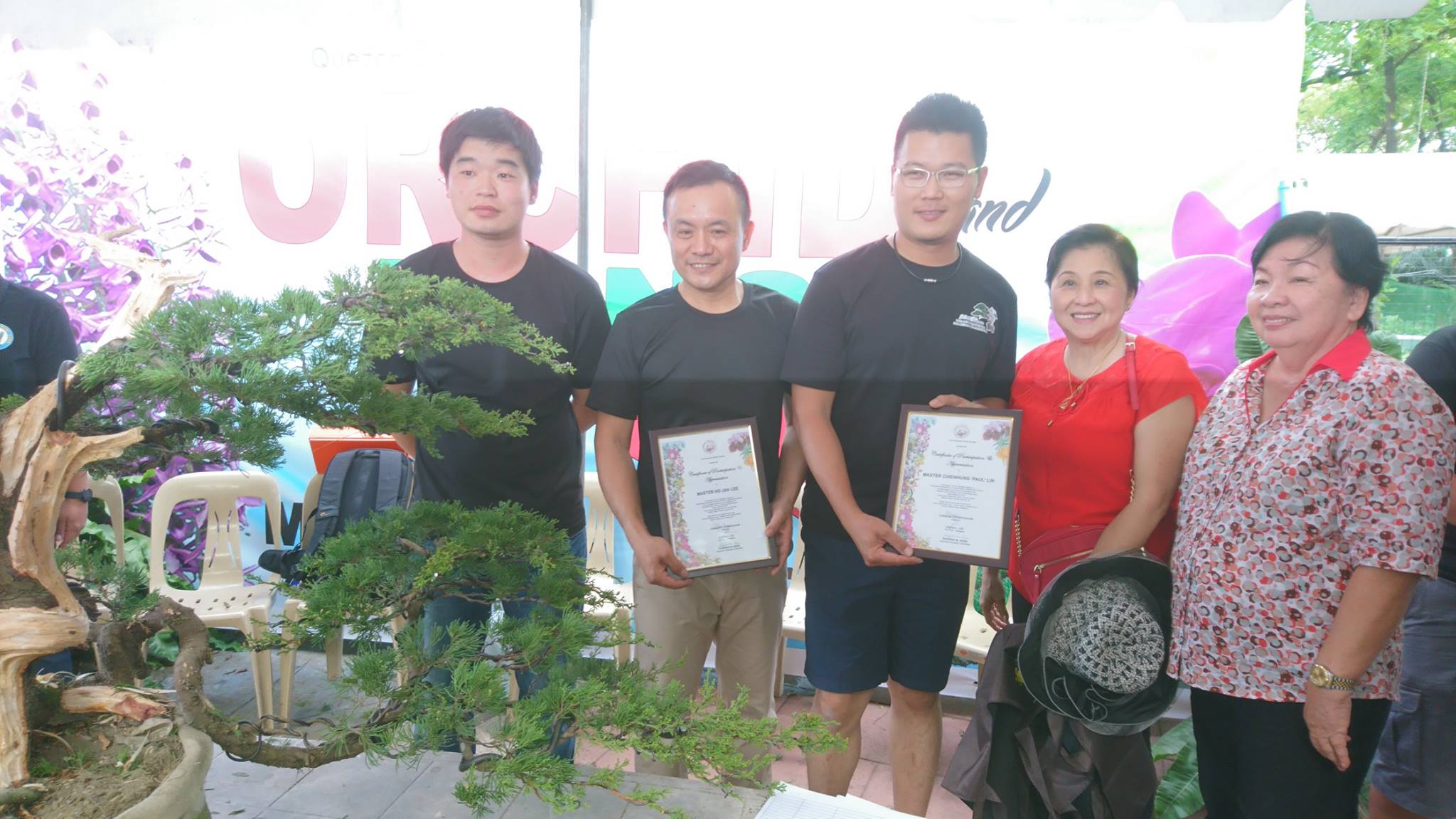
Bonsai Lecture
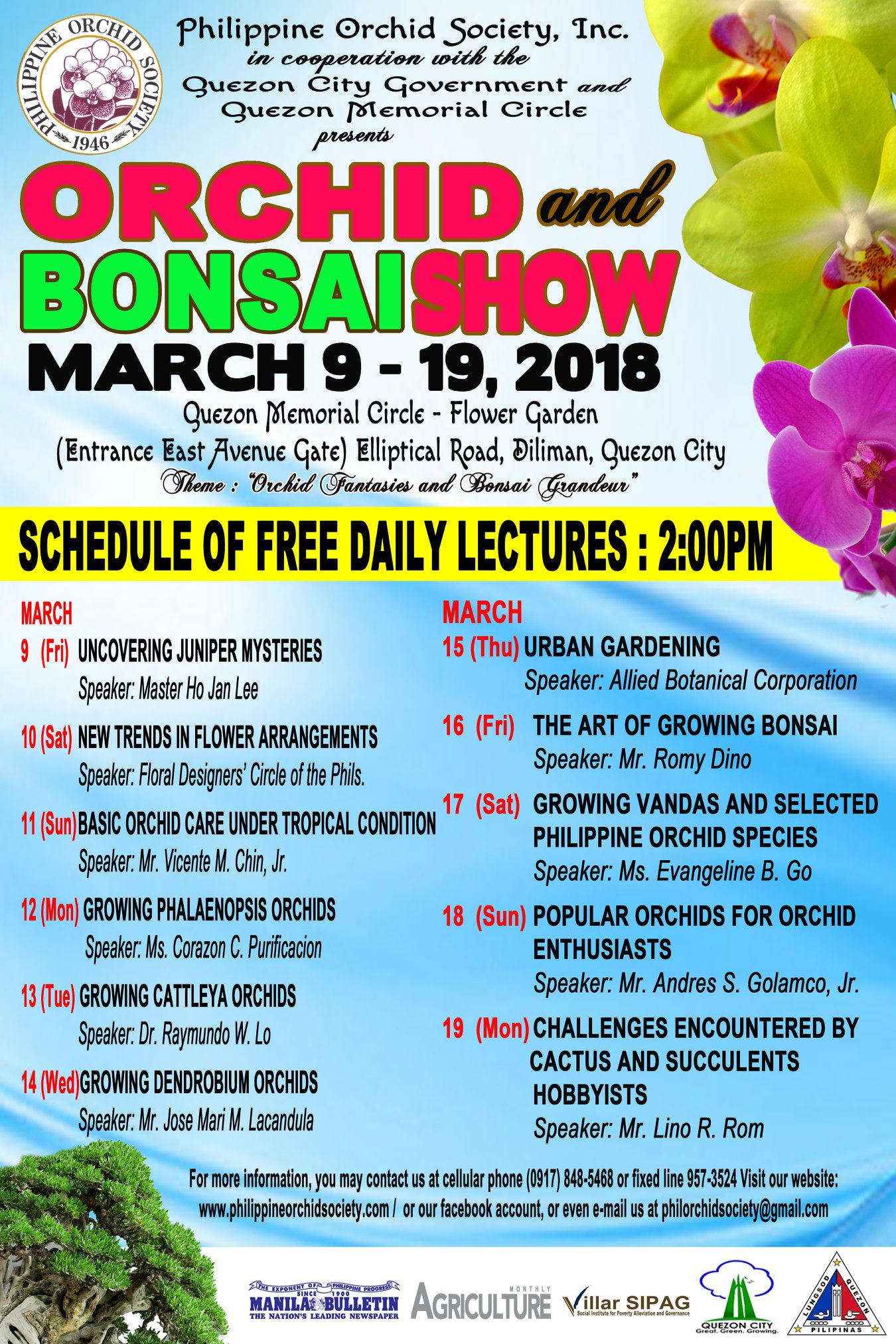
Powered by: Home Gardening PH

Comments Off on 2018 Philippine Orchid Society’s Annual Orchid and Bonsai Show
Posted in flowers, ornamental,, orchid, agriculture, garden, plants, landscaping, show, horticulture | Tags: agriculture, farming, gardening, horticulture, orchidology, orchids, philippine, shows
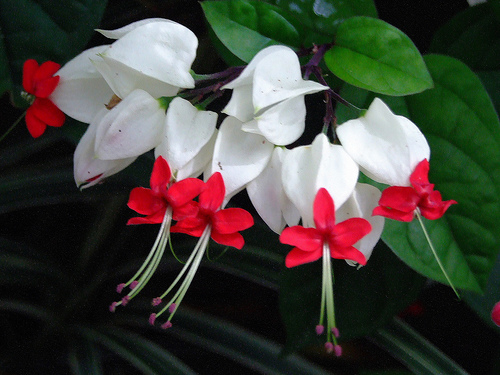
One of the small flowering vine suited for beginners and ideal as a houseplant is the two colored white and red Bleeding Heart. The Tropical Bleeding Heart vine, or scientifically known as Clerodendrum thomsoniae is a species of flowering plant in the genus Clerodendrum of the family Verbenaceae, native to tropical west Africa from Cameroon west to Senegal. It is an evergreen liana or forest vine growing to about 4 meters tall, with ovate to oblong leaves at abpit 8–17 centimeters long. The flowers are produced in cymes of 8-20 blooms altogether, with each flower having a pure white to pale purple five-lobed calyx about 2.5 cm in diameter, and a red five-lobed corolla 2 cm long and in diameter. This attractive white and red floral color is one of the main feature of this beautiful plant.
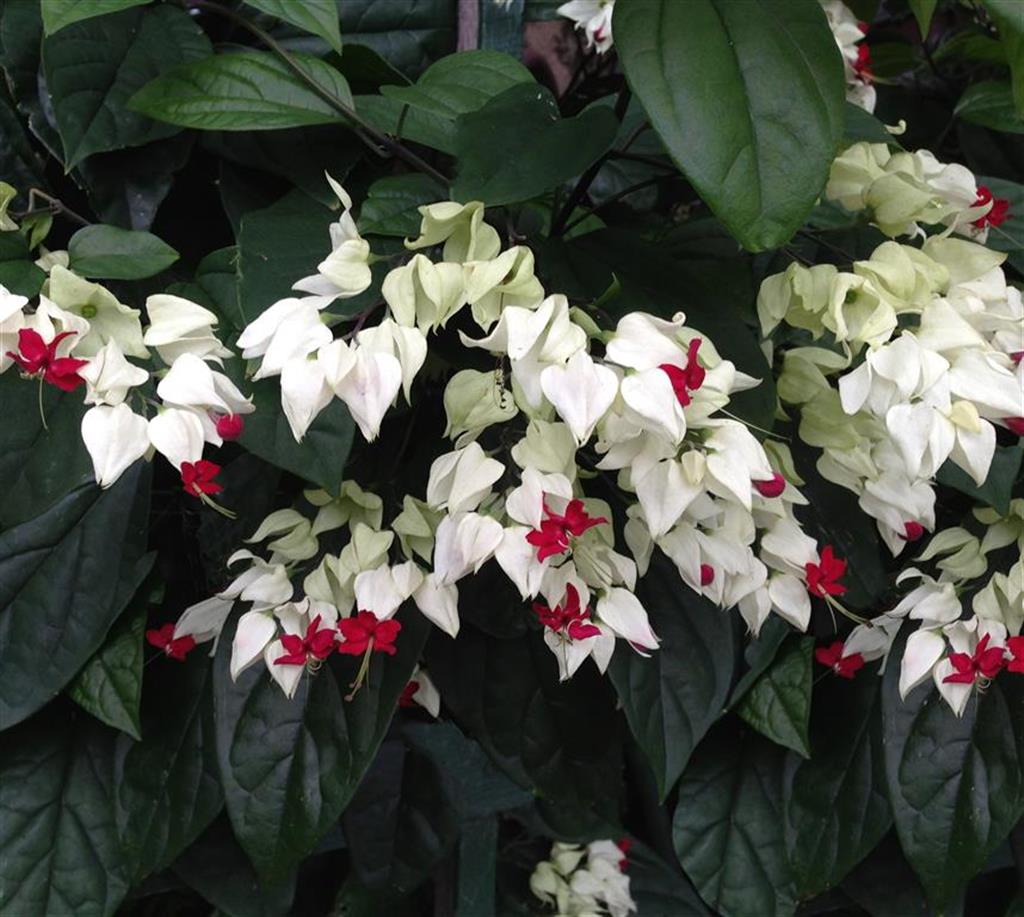
This plant is also commonly called the bleeding glory-bower or glory-bower. In fact, the plant is so easy to grow that in regions it has escaped from cultivation and become naturalized in its new habitat. The plant is easy to maintain and non-invasive. The plant was named at the request of Rev. William Cooper Thomson, a missionary and physician in Nigeria in the 1870’s, in honor of his late first wife.

The Bleeding Heart is grown as an ornamental plant for its decorative two-colored flowers. It thrives in areas with temperatures from 10 – 30 °C . For temperate areas it requires shelter from frost. Due to its beauty, this plant has gained the Royal Horticultural Society’s Award of Garden Merit.
Cultural requirements:
Light. The Bleeding Heart Vine loves full sun and needs this condition in order to bloom profusely. The plant needs to be trimmed regularly, especially the dried flowers, leaves and branches, for new flower spikes to come out. Pruning will also make the plant neat and compact.
Watering. Water the plant regularly usually everyday or every other day. Do not let the soil to be dry as the plants will easily wilt when the soil becomes too dry.
Special Requirement. Since this plant is a woody twining vine, it needs a wire support or a small trellis for it to climb, and spread its branches in order to produce numerous flowers. For maintenance, the plant needs to be trimmed regularly to obtained its desired size, and to prevent it from growing wild.
Soil. Bleeding heart vines thrive on fertile, well drained soil. Use a potting mixture equal proportion of loamy garden soil, river sand and leaf compost. Use a 6-8 inches diameter pot for this. Sow about 3 -5 seeds directly on the pot or rooted stem cuttings (usually in 2 weeks), water regularly and select a sunny area for the plant. Seeds germinate in about more than a week’s time. Repot and change the soil once in every 2 years. For best results, apply an inch of mulch of decomposed leaf litter for added nutrients.
Fertilization. Apply a teaspoon of complete fertilizer like 14-14-14 or a controlled release fertilizer once the plant is already growing vigorously, and apply fertilizers once every 3 months.
Propagation. The Bleeding Heart is easy to propagate. The plant can be reproduced through stem cuttings or by seeds. Pollinated flowers produce black fruits which contain black seeds.
Pest and Disease Control. Bleeding hearts are relatively pest-resistant, however it is susceptible to damage by mealybugs and spider mites. Insecticidal soap spray is generally sufficient to keep the pests in check. Reapply the spray every seven to 10 days, or until the insects are eliminated.
This plant is easy to not very challenging to grow and for a beginner, it will reward its grower with a regular spray of flowers. It is also ideal for places like a condominium or a small apartment.
Powered by The Home Gardening PH

Posted in Uncategorized
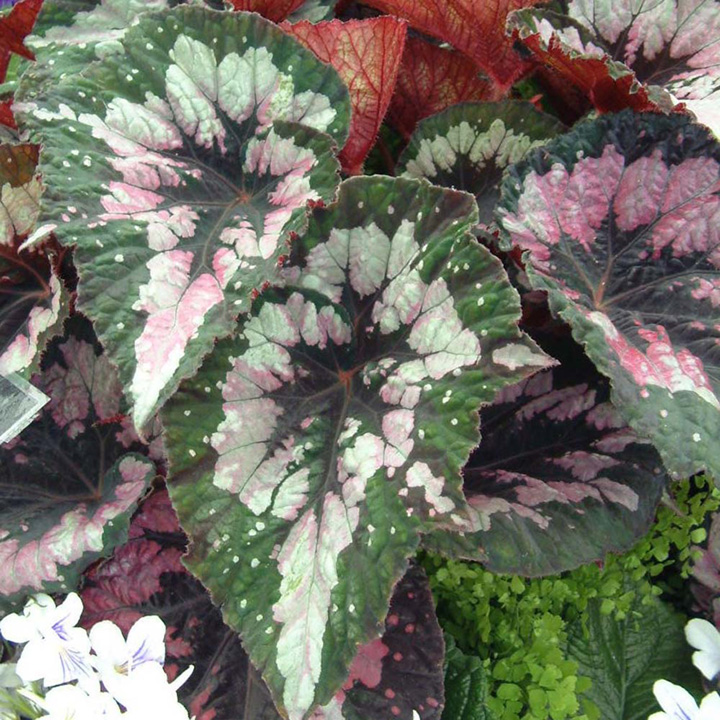
Begonias are a group of interesting plants with over 2,000 species and hybrids. They are valued primarily for their uniquely beautiful flowers and also their decorative leaves, varying in shapes and color. Begonias also range in size from the tiny, ground hugging creepers to the stout-stemmed large specimen plants. All begonias have green or colorful asymmetrical leaves, that grows alternately on its stem. Many begonias doesn’t require continuous direct sunlight, which makes them particularly suitable for indoor use.
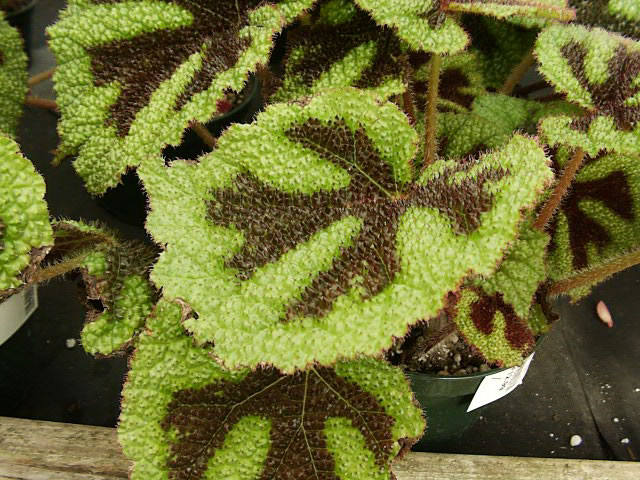
Most plants produce clusters of flowers on short stalks arising from the stem or on each leaf axil. There is a separate male and female flowers on the same plants, and with these, female flowers can be pollinated to produce a capsule with seeds.
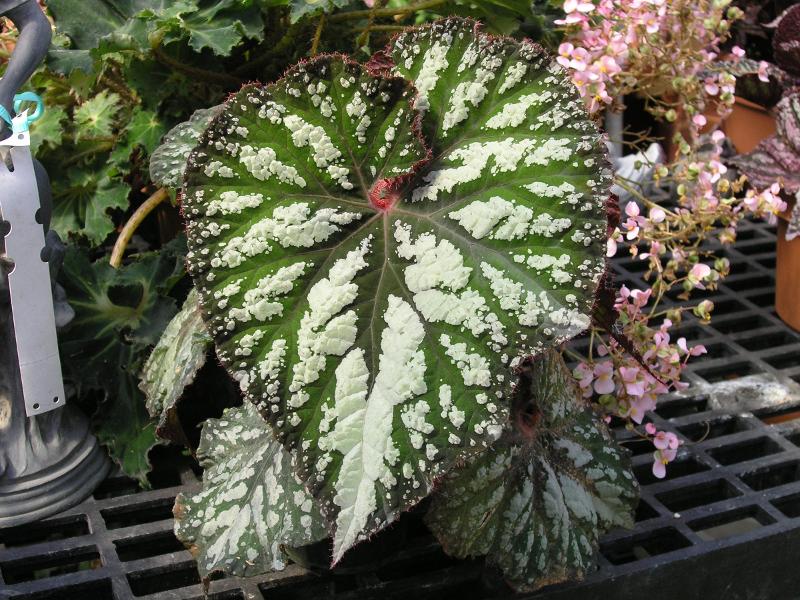
The plant group is so large that it is divided into different categories like fibrous rooted and rhizomatous begonias, flowering or foliage begonias, miniature or large begonias, and many others. There is actually a great biodiversity in plant appearance in this plant group, which makes it very interesting for collectors and breeders.
With these varied characteristics, begonias have varied uses also. The large begonias, can be used as specimen plants established on large decorative pots, or they can be used as landscaping plants in areas with diffused bright light, usually as companion plants or as ground covers. Medium sized plants are ideal as hanging plants, landscape plants in areas near cascading rocky terrain, in rock gardens, and in indoor gardens. Miniature begonias are ideal for dish gardens, as their leaves and flowers provide added color in these miniature arrangements.
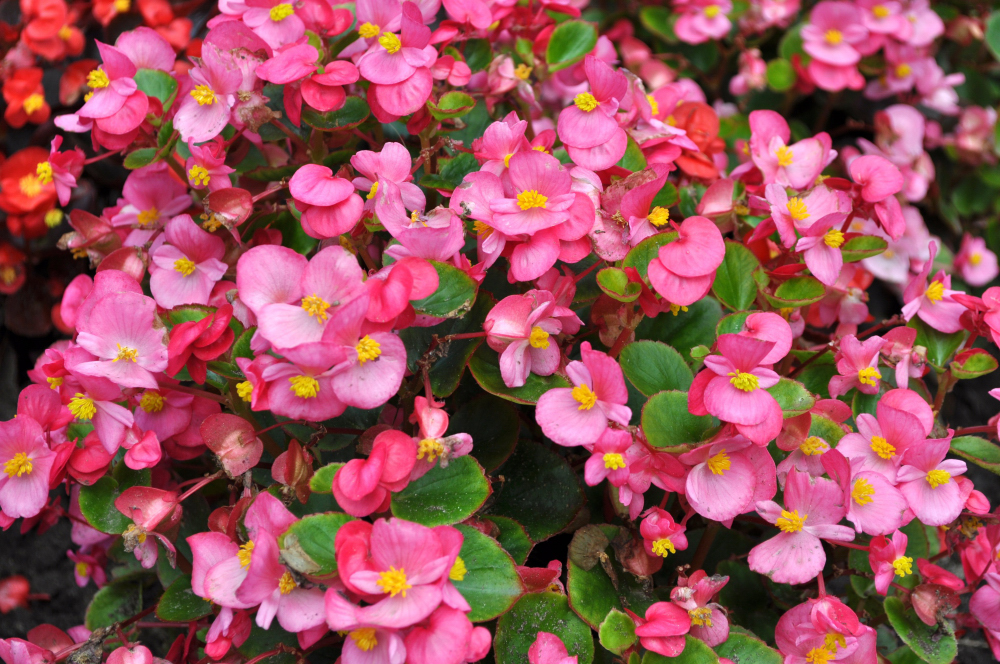
Begonias as actually very easy to take care of and they easily root on soil and can easily thrive in a shaded or semi lighted area and with moderate care. You just have to watch that they don’t get water logged as they can easily rot on long standing very wet soil.
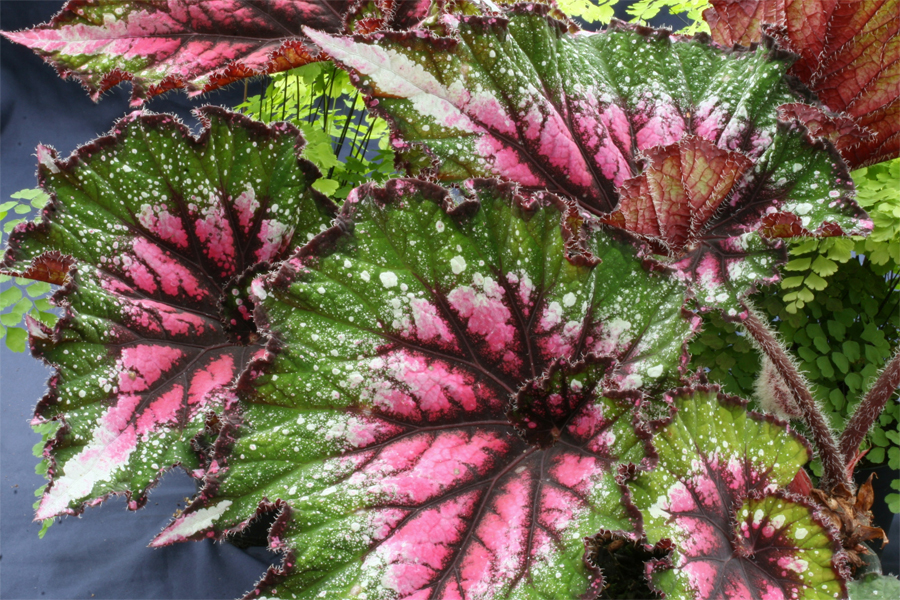
Light. Fibrous-rooted and rhizomatous begonias grown primarily for their foliage need diffused bright light, but never direct sunlight. Those grown primarily for their flowers need three to four hours a day of direct sunlight.
Temperature. Normal room temperature are suited for actively growing plants. Provide sufficient relative humidity or moisture as Begonias suffer in dry air. For increased humidity, stand pots on trays of moist pebbles and suspend saucers of water under hanging baskets.
Watering. Water plants regularly or moderately, usually every day or every other day, allowing the top inch of the potting mixture to dry out before watering again. Don’t let the leaves to wilt. Some begonia species and hybrids have a dormant or rest period, and some at times loose their leaves and produce leggy plants.
Fertilization. Apply a diluted high potash liquid fertilizer to actively growing plants every two weeks. This is to induce regular flowering.
Potting and Repotting. Use a loamy soil textured soil mixture, usually equal parts of garden soil and leaf compost. Place an inch layer of clay-pot fragments at the bottom of the pots for extra drainage. When potting or repotting, simply sprinkle some potting mixture around the tuber and roots, and tap the container briskly to settle the mixture.
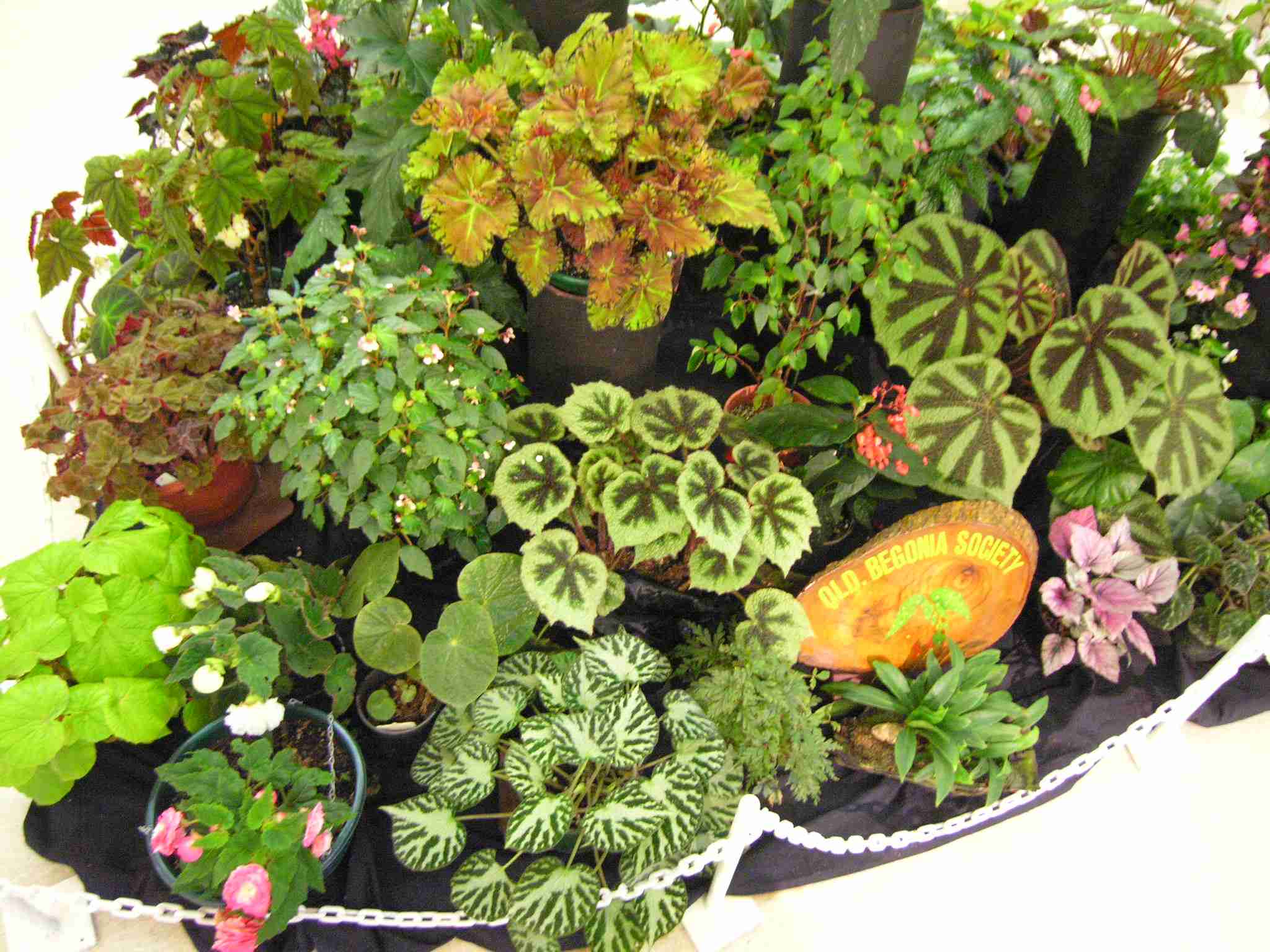
Propagation. The best way of propagating tuberous begonias like B. gracilis, B. grandis, and B. sutherlandii is from small tubers or bulbils that appear in leaf axils during the cold months. Detach these bulbils when top growth dies down. They can be temporarily be stored in a container in a cool dry place or you may plant the bulbils in a pot with equal mixture of garden soil and leaf compost. Just place the bulbils over the soil and cover it with a moistened mixture. Place the pots in bright filtered light water lightly, just to make the soil moist, but not soaking wet. Water generously every watering when bulbils produce shoots until mature. Another way of propagating Begonias is through stem cuttings, usually a 2-3 inch long tip cutting can be placed on moistened soil. Dipping the base of the cutting in a rooting hormone will help in producing roots. For added moisture, you may enclose the entire pot of rooted cuttings in a clear plastic bag and stand it in filtered bright light until cuttings are established. Leaf cuttings can also be used, in which a whole leaf with petiole is inserted into the potting mixture. Leaf cuttings can also be rooted in a glass jar half filled with water, with the base of the petiole touching the water. When leaf cuttings have rooted, they can be planted on the soil. For serious breeders, female flowers can be pollinated to produce capsules with seeds. These produce hybrids that have new unique features from the original parents.
They are ideal plants for both landscaping, hanging baskets and for dish gardens. They are actually valued very much by plant collectors and also by plant hybridizers due to their numerous characteristics, size, leaf shape, colors and floral beauty. Why not start collecting these uniquely beautiful plants and also enjoy growing them.
Powered by: Home Gardening PH

Posted in flowers, ornamental,, Uncategorized
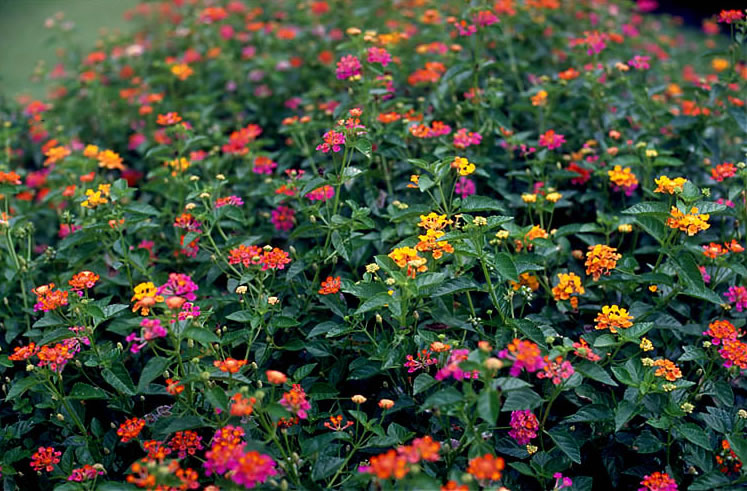
Lantana, which is locally known as Kantutay, or scientifically known as Lantana camara, is a hardy and persistent floriferous shrub. It can thrive in a hot and sunny areas, without much cultural concern, almost spreading and growing like weeds. The plant usually grows to a woody shrub almost 2 feet tall. Lantana belongs to the Verbenaceae plant family and is native to the American tropics.
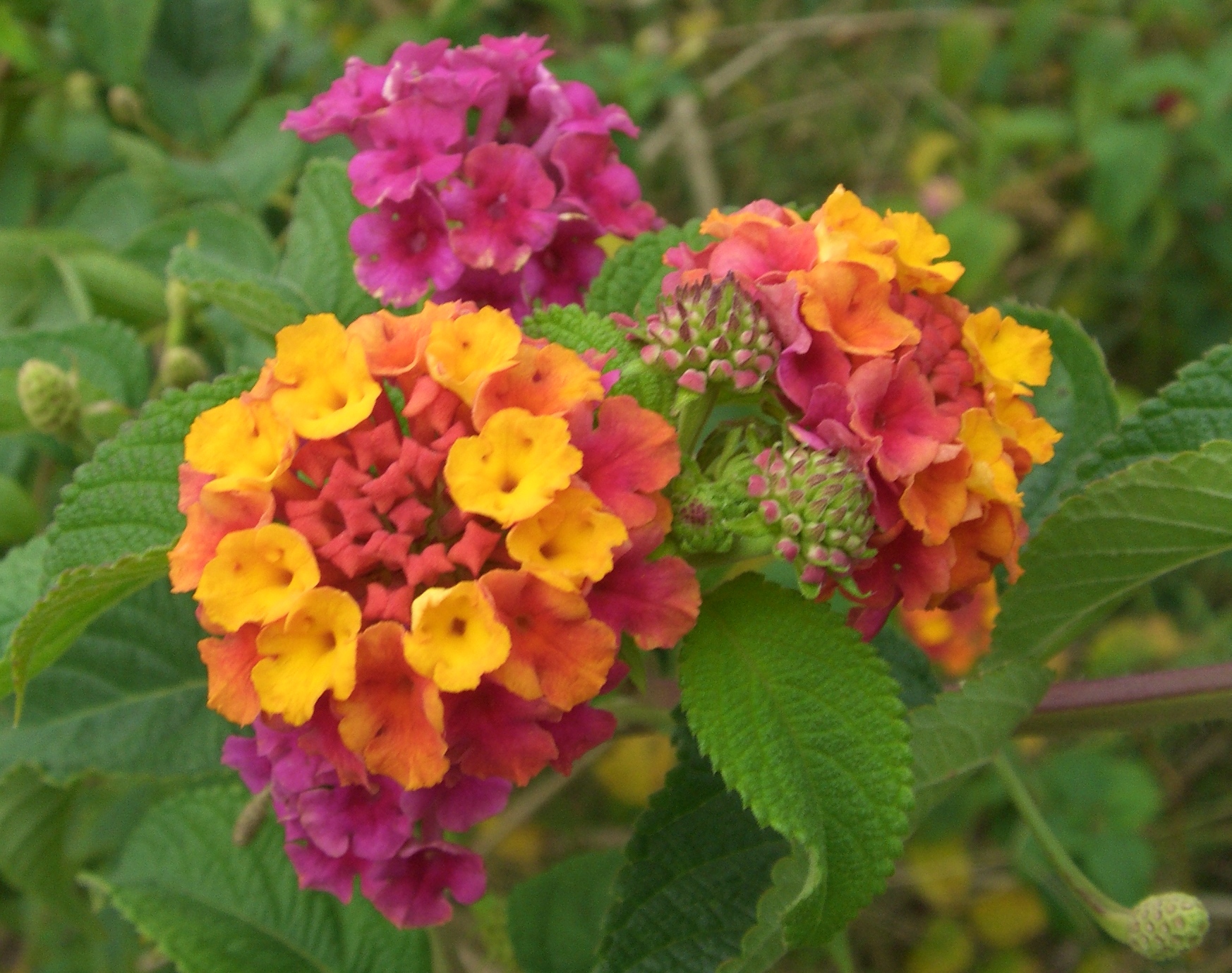
Flowers form in small clusters, which are often comprised of individual flowers that start out one color and mature to another, giving each cluster a multicolored effect. It is like a miniature Santan but with a much brighter and more colorful effect. Some flowers are single color, while others could be two to three color combinations. Butterflies adore the newly opened florets, making Lantana a favorite and a leading plant for any butterfly garden. The plant also emit a peculiar aromatic smell when leaves or branches are crushed, which are used by grandmothers in the Rizal province area to scare children. They tell their children to go home at once when sunset commences and the smell of Lantana is evident, because it’s the time when aswangs comes out and roam.
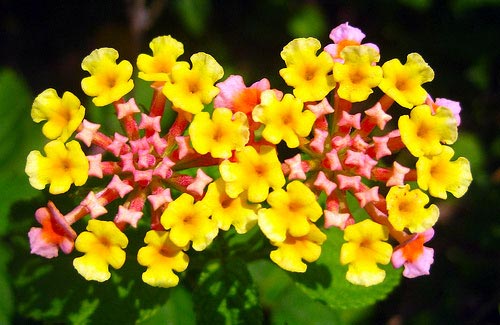
Lantana is easy to cultivate, almost growing independently and oftentimes widespread like a weed. It thrives in full hot, bright sun. it will benefit from regular watering and fertilization. The plant is usually handled like an annual plant, regularly pruning it each season or year, removing dead branches to produce new shoots with colorful flowers.
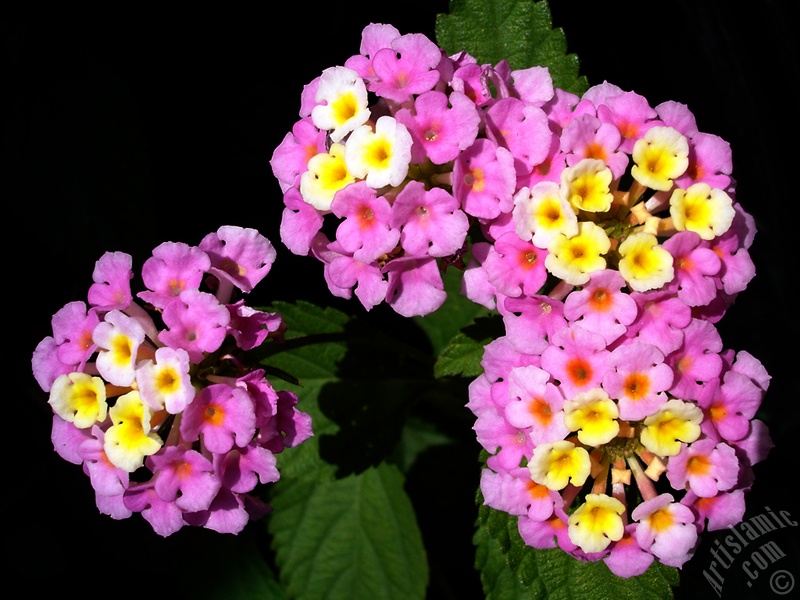
Lantana is grown from rooted cuttings and also from seeds. Plants can be easily propagated by rooting 6 inch long stem cuttings in containers filled with moist potting soil. Usually newly rooted cuttings and seedlings are widely available in plant stores during the end of summer. Plants can be grown directly to the ground or planted in horizontally long rectangular pots or in hanging baskets exposed to full sun. Mix a teaspoon of controlled release fertilizer into the potting medium to be used and water regularly. Once established, Lantana needs little care beyond occasional trimmings to make the plant need.
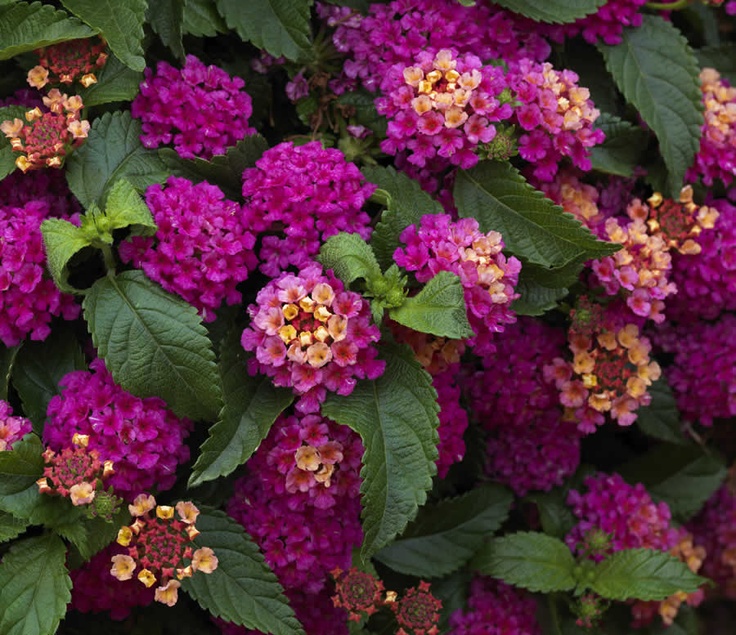
There are numerous hybrids to choose from with floral colors ranging from white, yellow, orange, lavender and red. Most plants have flower clusters with bright multiple colors, which makes this plant group very interesting to grow. Plants can be grown in hanging baskets exposed to full fun to provide a very colorful hanging plants near windows or balconies. There are also some varieties with leaves that are lightly variegated with white, which are often used in large containers. With all the different floral colors this plant has to offer, it is also a very good material for local plant breeders to work on.
In the Philippines, Lantanas are used as corner plants or border plants, usually placed near walls of buildings exposed to bright sun light. They are very tolerant and floriferous plants, almost providing flowers all year round. However, plants needs to be pruned regularly as it can become weedy. Some plants may escape cultivation and can become noxious weeds. The plant is known to be toxic to livestock such as cattle, sheep and horses, and also to dogs and goats. On the brighter side, Lantana leaves has medicinal values such as it possess antimicrobial, antifungal and insectidal properties. It is also used in traditional medicine and is used to treat cancer, skin itchiness, leprosy, chicken pox, measles, asthma and ulcers.
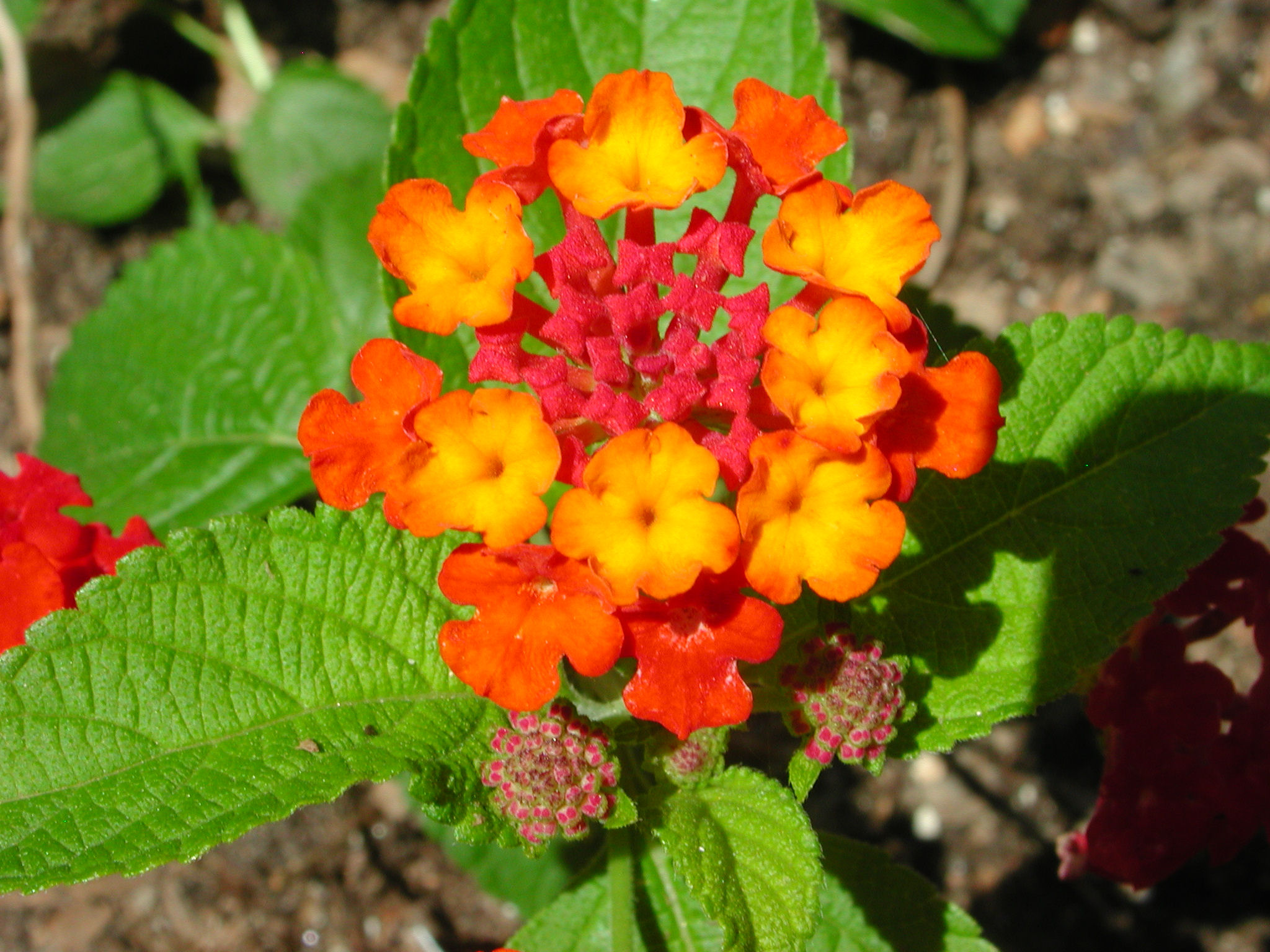
Powered by The Home Gardening PH

Posted in Uncategorized
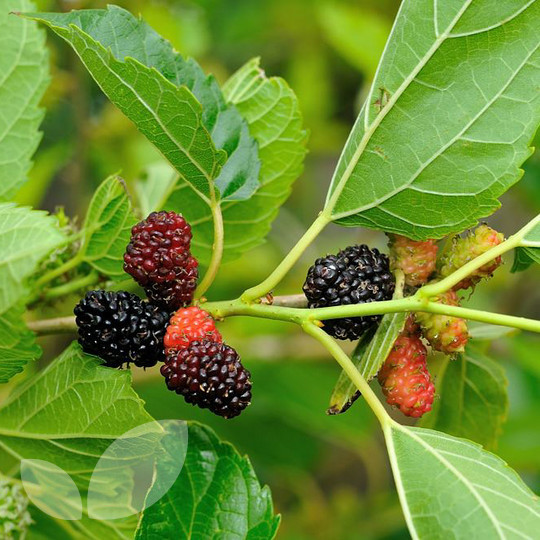
One interesting fruit tree is the mulberry, which can be trained as a bonsai, or grown also as an ornamental tree and a favourite fruit tree for children. Mulberries, which is commonly known as Morus nigra or Morus indica, depending on the species, is a popular plant provinces with multiple yet not well practiced uses. The genus Morus comprises about 10-16 species of deciduous trees, usually growing wild and also under cultivation both in the temperate and tropical regions. The tree belongs to the plant family Moraceae. Mulberries are fast-growing when young, but soon become slow-growing and rarely exceed 10–15 m (33–49 ft) tall, making it a small to medium sized tree.
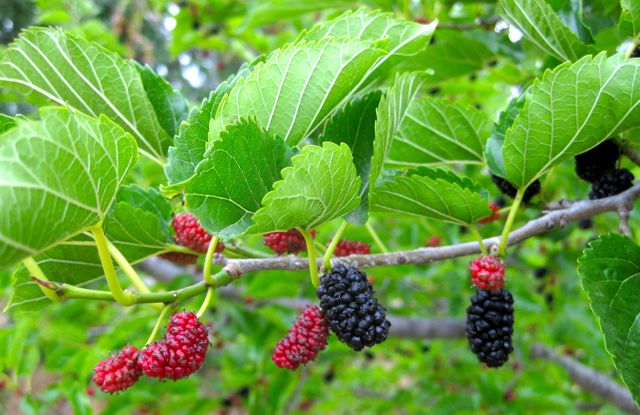
Edible red and dark violet fruits are sweet
Economically, the tree is commonly grown to produced leaves which are usually fed to silk worms for the manufacture of silk threads. The mulberry is a popular ornamental plant due to its colourful reddish to blackish multiple fruit, which is edible, most especially to children and adults alike. The fruit can also be used to manufacture food sauces, fruit juices, fruit wine, tarts, jams and pies. Immature fruits are white, green, or pale yellow. In most species the fruits turn pink and then red while ripening, then dark purple or black, and have a sweet flavour when fully ripe. The fruit also produce pigments from its anthocyanins or sap which used as food color and for fabric tanning. It has also medicinal value, as it is valued for the treatment of ringworm, its fruit is very rich in vitamins, minerals and also has plenty of anti-oxidants.
Mulberries is widespread in the Philippines, China, Japan, India, Myanmar, Korea, Himalayas, Africa, Libya and Iran. Some horticultural organizations are even making breeding projects to produce excellent Mulberry cultivars and hybrids for food production and for commercial purposes.
Mulberries are easy to grow. It loves full open sun and will benefit from regular watering and fertile loamy soils. On the other side, Mulberries are resistant to drought and poor soil, and often they can survive and grow wild with minimal care. However, for cultivation purposes, they will benefit from sufficient fertilization and care. Mulberries can be grown from seeds, and this is often advised as seedling-grown trees are generally of better shape and health, but they are most often planted from large cuttings which root readily during the rainy season. Trees are usually planted in distances of 6 feet by 6 feet in rows, and often pruned regularly every year to make it compact. Pruned branches can be cut and used to make durable baskets for livelihood. Ecologically, they are important host plants for butterflies.
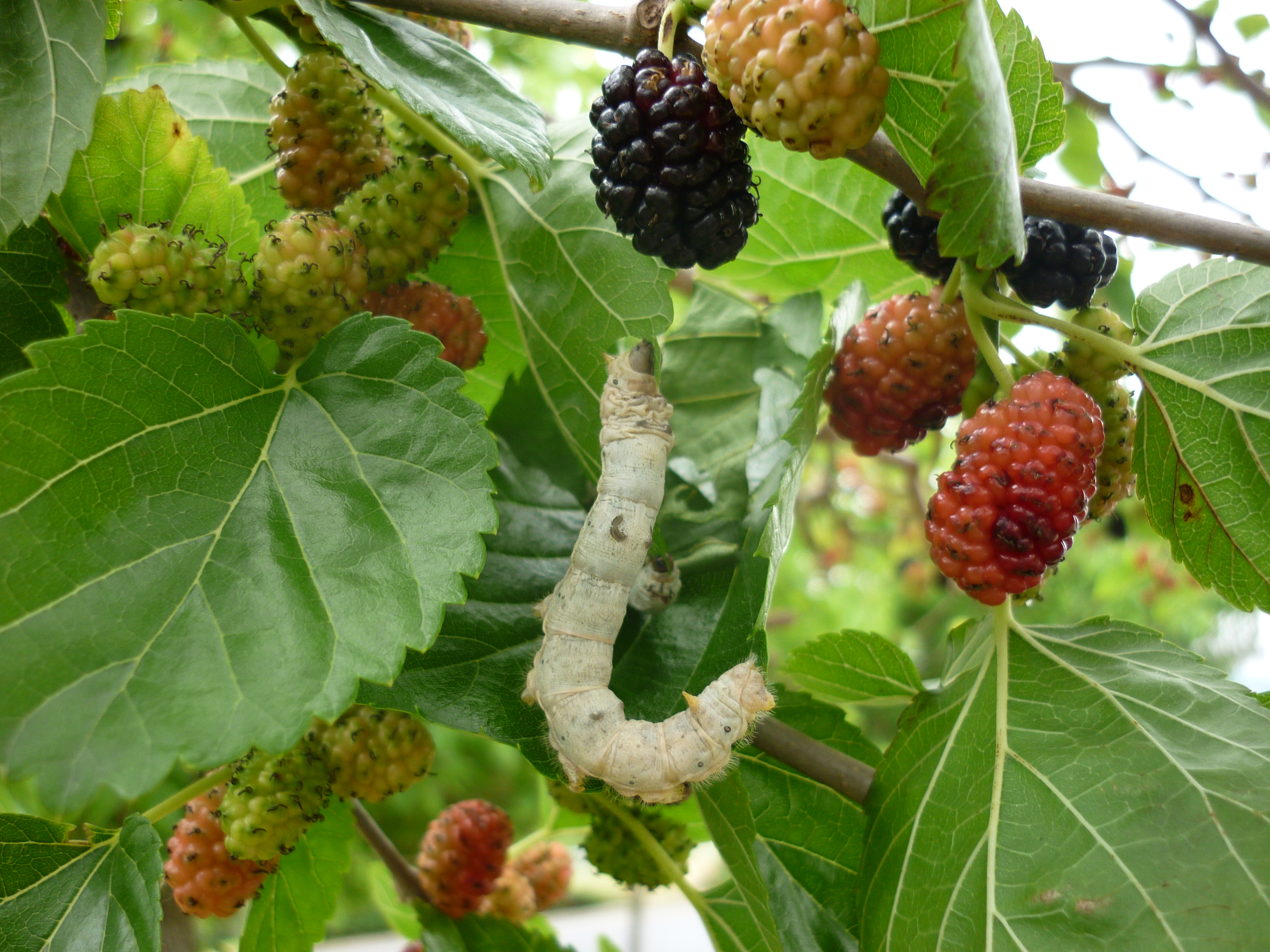
Silk worm feeding on the leaf of the mulberry
Mulberries are certainly a unique addition to the home garden or in the farm as it is a source of instant edible and nutritious fruits. A small or medium sized tree decorated with thickly laden with yellow, red and black fruits is certainly a sight to behold especially to children and it is a good decoration. Commercially, mulberries can also be trained into bonsai, its fiber used to manufacture paper and also for basketry, and its leaves as a feed for silkworm in the manufacture of silk textile.
Powered by:

Posted in Uncategorized

A street with blooming Golden Shower trees.
The Golden shower is one of the beautiful and brightly colored flowering tree in the Philippines. It is commonly used an ornamental tree in subdivisions and residential areas and also in memorial parks. But surprising to know, aside from its decorative beauty, it is also highly regarded as one of the most important medicinal plant, especially in India. The Golden Shower tree, or Cassia fistula, belongs to the plant family Fabaceae, which is related to the legume family of plants. Its English name is Pudding pipe tree, which is a description of its long black fruit or pod, which is similar to a tobacco cigar or pipe.
The Golden Shower is an erect, medium-sized tree, which sheds its leaves every year. Its pinnate leaves are smooth, about 30 to 40 centimeters long, composed of individual ovate leaflets that are 8 to 16 leaves, about 10 centimeters long. Its special feature is its fragrant and bright yellow flowers, which are borne in long, lax racemes about 30 to 50 centimeters long, on stalks 3 to 5 centimeters long. They are actually majestic to look at when in bloom, and flowers are usually shed after a few days. Flowers then form into long dry fruits, which are indehiscent green pod, which turn black when mature. They are like long cylindrical pipes or similar to black tobacco cigars , about 30 to 60 centimeters long, and about 2.5 centimeters thick. The long pods contain numerous seeds about 20 to 25 pieces per pod, embedded in black, sweet pulp, completely separated by thin, transverse dissepiments or panels.
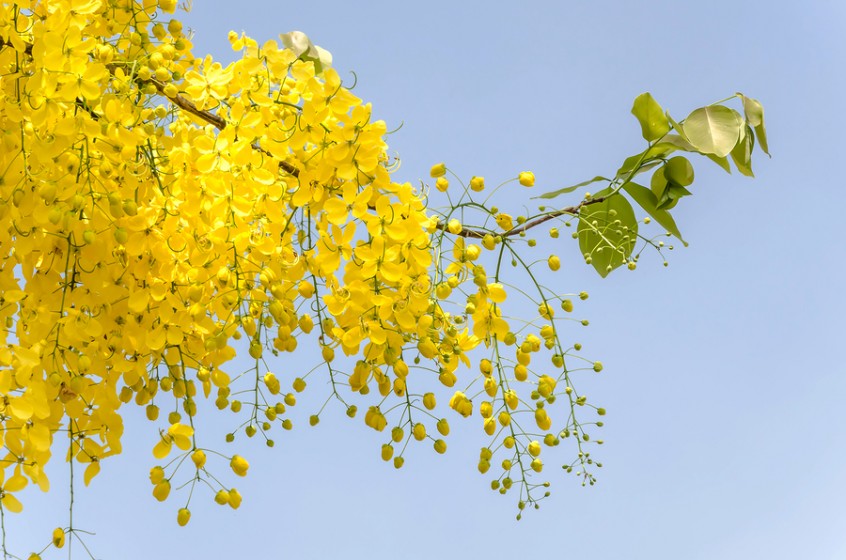
Flowers of the Golden Shower in close view…
It usually blooms during the summer period. Flowering is very profuse, with trees being covered almost entirely with yellow flowers, many times with almost no leaf being seen. It thrives well dry climates, and grows best in full sun on a well-drained fertile soil. The tree is relatively drought-tolerant and slightly salt-tolerant. It can be subject to mildew or leaf spots, especially during the second half of the growing season or during the rainy season. The tree will bloom better where there is pronounced difference between summer and wet season temperatures.
The tree is found all over the Philippines, from northern Luzon to Mindanao. The Golden Shower is cultivated as an ornamental flowering tree or sometimes planted for its medicinal properties. It is native of tropical Asia, from the Indian subcontinent to adjacent regions of Southeast Asia. It was and was later introduced to the Philippines due to its popularity as an ornamental tree and its beneficial medicinal uses. It is the national tree of Thailand, and its flower is Thailand’s national flower. Its yellow flower is the symbol of Thai royalty. The golden shower tree is also the state flower of Kerala in India. The flowers are of ritual importance in the Vishu festival of Kerala.
Among its medicinal uses are it has anti-tumor, antiperiodic, antioxidant, anti-allergic, anti-diabetic, anti-bacterial, anti-fungal (for ringworm), anti-pyretic, laxative, diuretic, laxative and purgative properties. The leaves, roots, fruits and pods are used in medicine. Due to its many medicinal uses, in India, the Golden Shower is known as aragvadha, meaning “disease killer”.
The flowers and young tender buds and shoots are eaten as a vegetable. It can be used as a garnish in salads.
Ecologically, the flowers attract a lot of honey bees, and is beneficial hosts to butterflies.
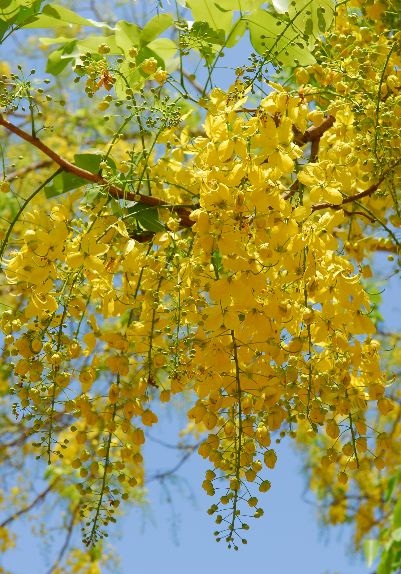
Sometimes, it is really important for us to teach the importance and uses of plants, trees and flowers to our children, especially how they are used in history and how other countries value them. With it, children will appreciate nature and learn to plant trees and plants around. In our modern and digital age, children and people need to know and appreciate the real plants, not just in computer games or from pictures from the internet. They are real living organisms which provide us with oxygen, shade, medicines and they beautify our surroundings. It is our role as parents and also as teachers to pass on these knowledge to children, so they could also care to the survival of these beautiful trees.